

Richardson / Liddell / Calvert Australian connection.
John Victor Richardson (Jack) born 1887 Lucknow Victoria at Nicholson in 1922 married Sarah Ann Liddell (Annie) born 1896 in Bairnsdale. Annie's father was William Coulson Calvert Liddell (Bill), born Scarsdale Victoria in 1875, and his mother was Mary Calvert, born 1841 in Allendale, Northumberland.
Mary Calvert's parents were William Calvert, born 1785 at Kirk Haugh just north of Alston, and her mother was Eleanor (Ellen) Allison born 1797 also in Alston. FamilySearch.com records indicate William Calvert was the third child of John Calvert from Kirk Haugh, and his wife Anne Spotswood was born in 1748 to John Spotswood at Allendale.
It is also worth noting, that Jack Richardson's brother, William Allison Richardson, was named "Allison" after his grandmother Ellen Allison on his father's side, being John Richardson, who married Hannah Allison in June of 1849 in Alston, Cumberland, UK. Sadly Will passed away at Swan Reach from diabetes 1917, after spending nearly 12 months on hospital ship, being unfit for battle in World War I.
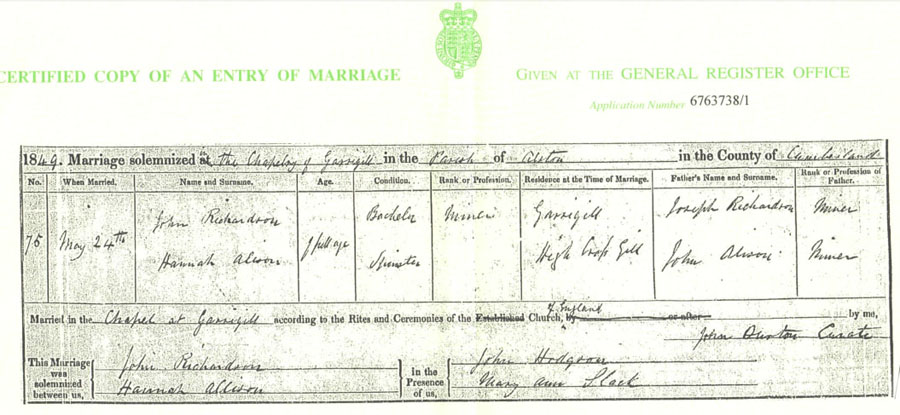
Marriage record of Hannah Allison to John Richardson of 1849 at Garrigill, Northumberland. Courtesy Ancestry.com
CALVERT FAMILIES IN NORTHERN ENGLAND.
As usual, extensive research time and effort has gone into attempting to confirming our Calvert Lead Ore mining ancestors from northern England, via the means of documented official records wherever possible. The surname of Calvert has hundreds of long standing references in both the Cumberland and Northumberland counties, especially in and around the townships of Ninebanks, Kirkharle, Kirkhaugh, Kirk Linton, Kewsick, Carlisle, Caldbeck, Allendale, Alston etc., which has made it impossible to establish the parentage of our earliest confirmed Calvert ancestor, being John Calvert as below.
For example, according to historian Lancelot Hodgson, Quaker records from Calbeck, Carlisle, Kirk Linton, and Megs Hill, indicate there were hundreds of Calvert family members formally known as "Quaker Friends" in this region, from the 1660s.
Also, family recollection of research done in northern England, indicate the possibility our Calvert clan may have originated from Germany or Austria, as european miners were recruited to England as advisors due to their world leading expertise in tin, lead, and copper mining, under the Charter of the "Company of Royal Mines", which according to Wikipedia, commenced in 1563 at Caldbeck. This possible connection may have been under the names of Kalvert or Coverd.
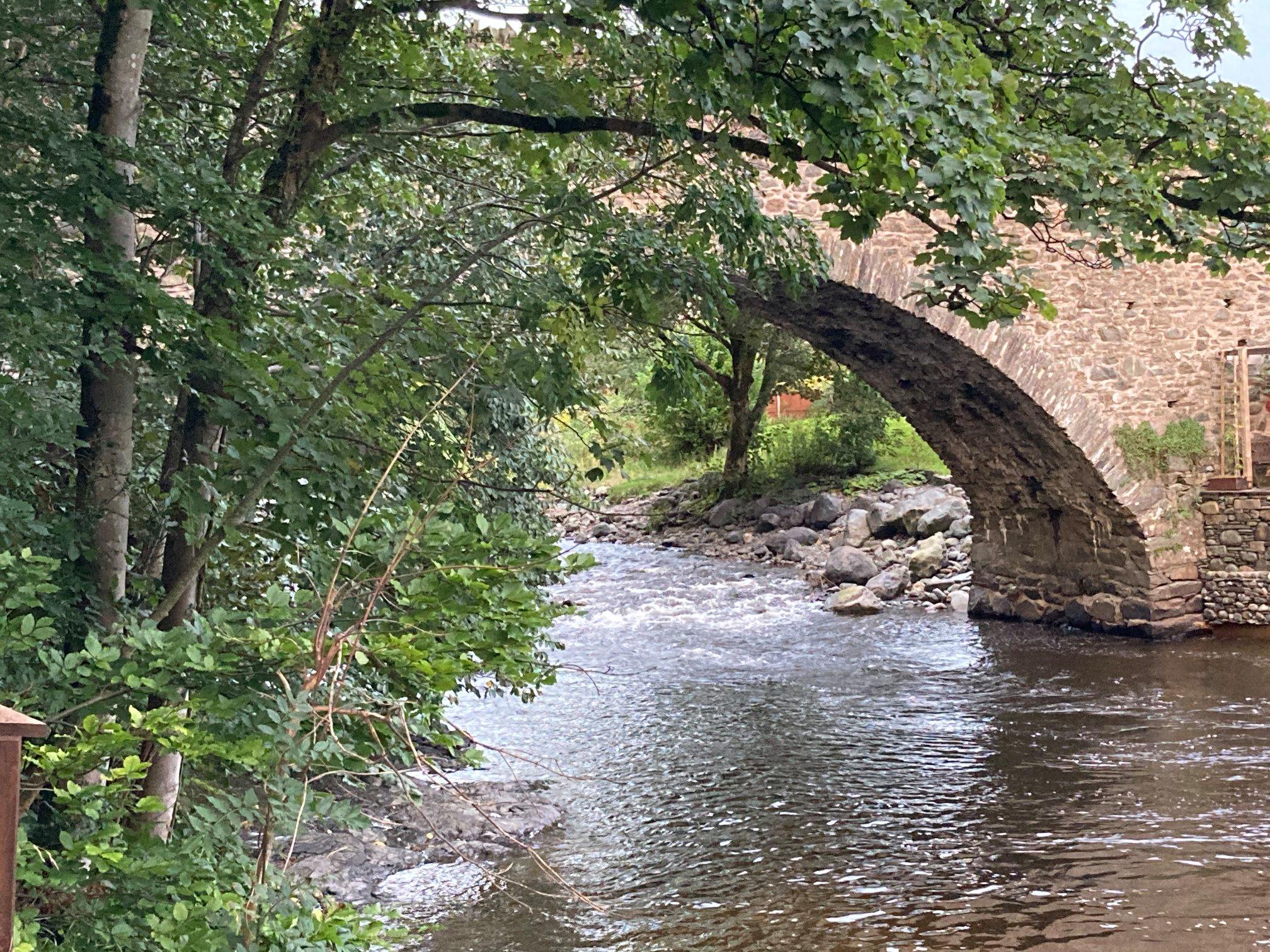
Calverts Bridge, Keswick.
As a separate matter of consideration, formal records also indicate that local brothers William ( 1770-1829 ) and Raisley Calvert ( 1773-1795 ) born to Raisley and Dorothy Calvert nee Mounsey at Greystoke per Ancestry.com, arranged the building of the renowned Calvert Bridge at Keswick, as pictured above. It appears Raisley Calvert was a school chum and life long friend of the famous regional poet William Wordsworth, and many records show Raisley bequeathed the sum of 900 pounds to Wordsworth around 1795, in order that Wordsworth could devote himself to writing poetry full time, per
Calvert Connections of Windebrowe.
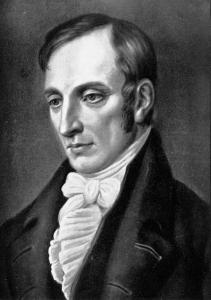
Portrait of William Wordsworth - Courtesy FamilySearch.com
According to this Calvert Reconnections web site, William Wordsworth literally acknowledged this debt in his sonnet “To the Memory of Raisley Calvert”, being
“Calvert! It must not be unheard by them
Who may respect my name that I to thee
Owed many years of early liberty.”
And just to add further confusion surrounding the issue of the history of our John Calvert, there are a few undocumented listings on Ancestry.com that our John Calvert may have possibly been the son of John Calvert and Mary Carr, born 1739 in Methley in Yorkshire, supposedly being a descendant of Henry Walter Calvert of Calverley born 1604, who was apparently related to a number of Barons of Baltimore, according to Wikipedia.
Naturally from the above info, research into Calvert listed here is ongoing, and any documented feedback is most welcome.
CALVERT FAMILY TREE.
Relating to John Calvert and his wife Anne Spotswood mentioned below here, unfortunately no records have yet been confirmed regarding John Calvert's birth or parentage. However Anne Spotswood was definitely a Scottish lass from Cramond, Midlothian, in Scotland, born in 1747 to William Spotswood and Ann Haldane.

JOHN CALVERT & ANNE SPOTSWOOD, NORTHUMBERLAND U.K.
  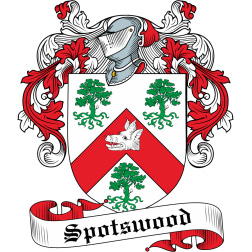 Family Crests for Calvert and Spotswood.

Birth record of Anne Calvert nee Spotswood in 1748 in Cramond, Midlothian, Scotland - Courtesy ScotlandsPeople.gov.uk
With thanks to assistance from researchers at Rootschat.com a marriage record of John Calvert and Anne Spotswood from 1771, can be reviewed, as shown below here. The only other confirmed information regarding the whereabouts of John and Anne Calvert, is via the birth records of their children being, they were at Ninebanks in 1772 when Isabel was born, and later in 1785 when William arrived, and in 1787 when Matthew was born at Kirkhaugh on the outskirts of Alston.
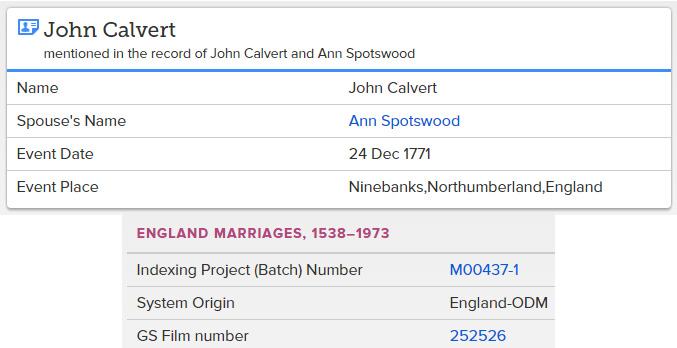
Marriage record of John Calvert and Anne Spotswood of 1771 at Ninebanks, Northumberland. Courtesy FamilySearch.com
The following records of John and Ann Calvert nee Spotswood and their children, have been confirmed as authentic.
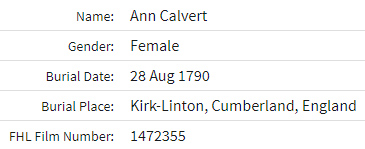
Death record of Ann Calvert in 1810 - Courtesy Ancestry.com
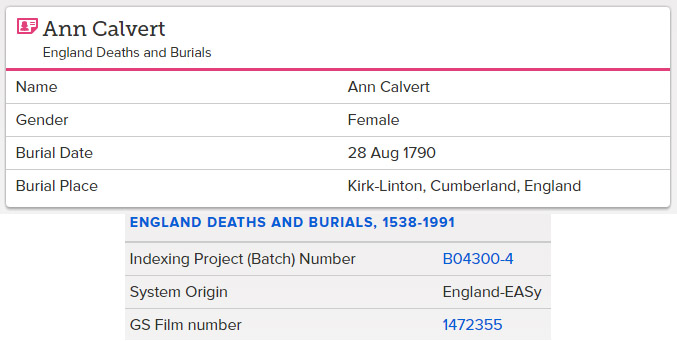
Death record of Ann Calvert nee Spotswood in 1790 - Courtesy FamilySearch.com

ISABEL CALVERT, NINEBANKS NORTHUMBERLAND U.K.
Fortunately, a single record has been confirmed to date regarding John and Ann Calvert's only known daughter Isabel Calvert, as displayed here. Unfortunately, certain other records of this era are quite basic, and are often difficult to confirm whilst researching from Australia. No listings have been confirmed to date, regarding a marriage or family or death of our Isabel Calvert, and it is possible, even probable, that she died at a very young age.
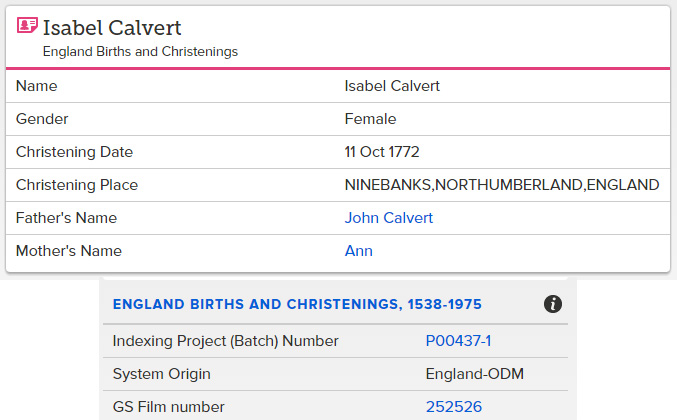
Christening record of Isabel Calvert at Ninebanks in 1772. Courtesy FamilySearch.com

MATTHEW CALVERT, KIRK HAUGH, NORTHUMBERLAND U.K.
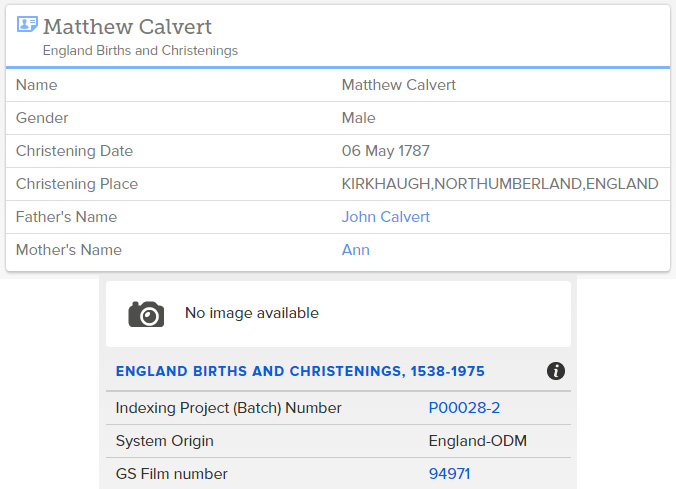
Birth record of Matthew Calvert born at Kirk Haugh in 1787. Courtesy FamilySearch.com
Only two likely records have been confirmed to date regarding John and Ann Calvert's first son Matthew Calvert, born 1787 at Kirk Haugh, Northumberland, UK. Unfortunatelty, no listings have been found as to our Matthew surviving, or ever marrying in this region. However, records do indicate Isabels' and Matthews' younger brother William Calvert did survive and procreate, as outlined further below here.

Death record of Matthew Calvert in Cumbria in 1808. Courtesy FamilySearch.com

WILLIAM CALVERT & ELEANOR ALLISON, NORTHUMBERLAND U.K.
  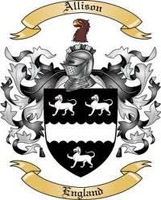 Family Crests for Calvert and Allison.
According to confirmed records of John Calvert and Ann Spotswood's family, Willian Calvert was the second son of John Calvert and Ann Spotswood, born in 1875 at Kirkhaugh Northumberland. As outlined below, our William Calvert married Eleanor Allison from Garrigal via Alston at Caldbeck in 1823, and it is basically thanks to the emigration of their four Calvert children for the Victorian Gold Rush in the 1850's, of William, John Russell, Sarah, and Mary, that the following facts and records are readily available.
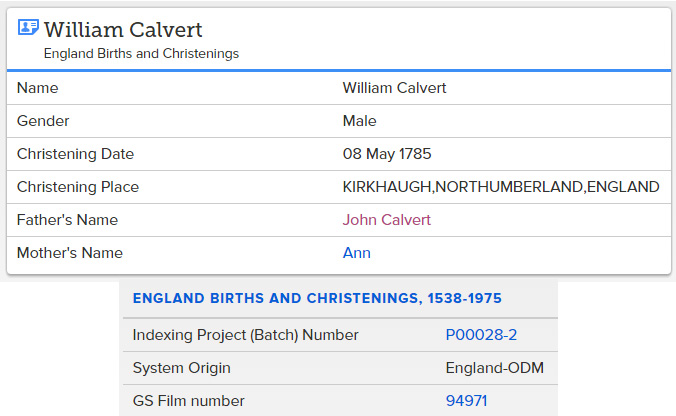
Christening of William Calvert in 1785 at Kirk Haugh.

Handwitten birth record of Eleanor to Thomas and Eleanor Allinson of Garrigal in 1798 - Courtesy Ancestry.com
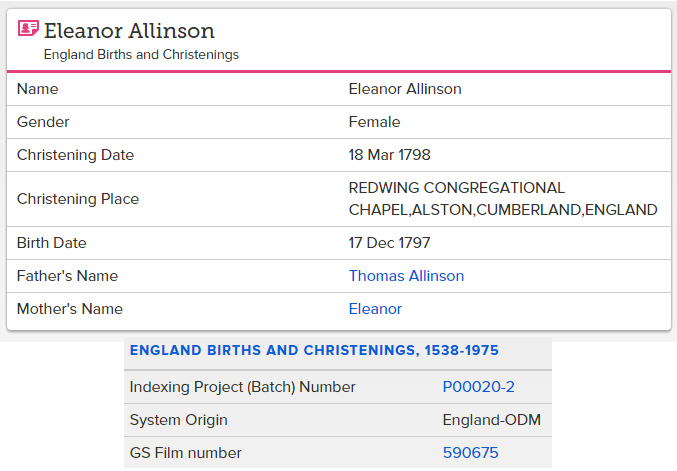
Christening of Eleanor Allison at Garrigal near Alston in 1798.

Photo of Redwing Chapel at Loaning Head, Garrigill.
Early records for William Calvert born 1785 at Kirkhaugh in Northumberland, and his wife Eleanor Allison, born in Alston in 1798, are quite clear, as shown here.
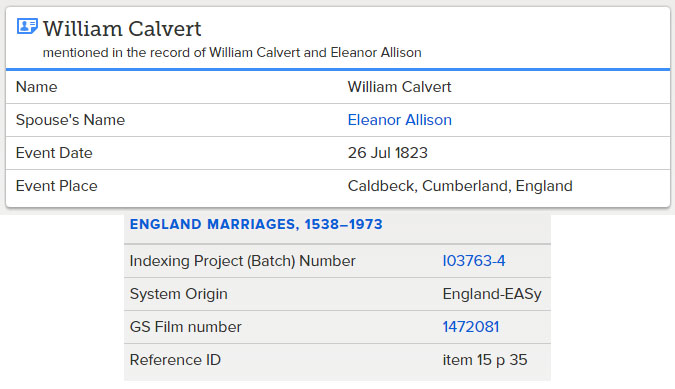
Marriage record of William Calvert and Eleanor Allison at Caldbeck in 1823.

Three generations from William Calvert and Eleanor Allison of Northumberland U.K. to William Coulson Calvert Liddell (Bill), born at Scarsdale on 1875 on the Victorian Gold Fields near Ballarat.
Two unconfirmed records on-line indicate they were married in either 1823 or 1824 in Cumberland, and had four children there, William (Junior) born at Kirk Haugh in 1824, John Russell in 1831 at Stotgill, Sarah also in Stotgill in 1833, and Mary in 1841 at Allendale.
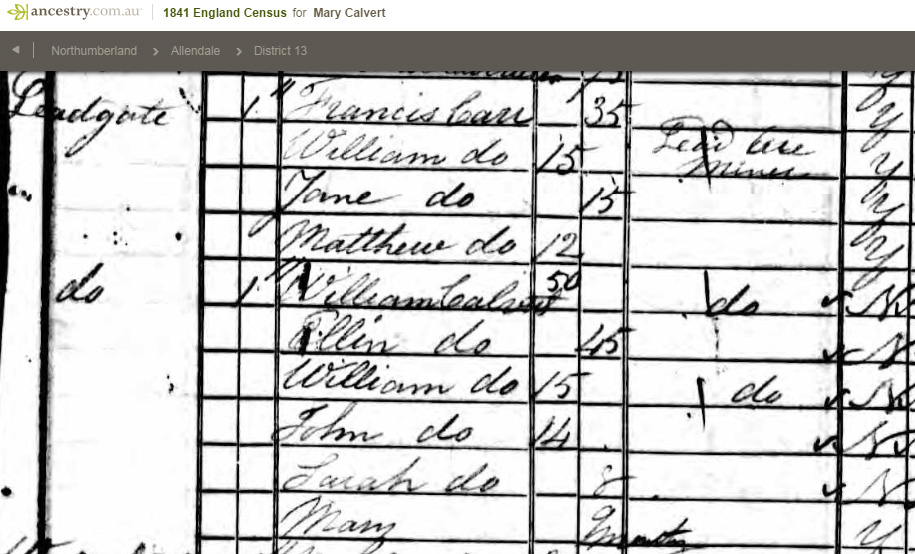
Census Record of 1841 for the family of William Calvert and Eleanor Allison (Ellen) at Leadgate via Allendale.
Looking into this 1841 UK census, of district 13 in Allendale, not far from Hexham, Northumberland, there appears nothing out of the ordinary regarding the Calverts, or their home environment. Their neck of the woods in District 13, consisted of quaint hamlets and residences known as Gate House, Ashes, Wall Nook, Mile Scott, Spring Hill, with the Calverts living at Lead Gate, where the predominant occupation of the locals was noted as "Lead Ore Miner".
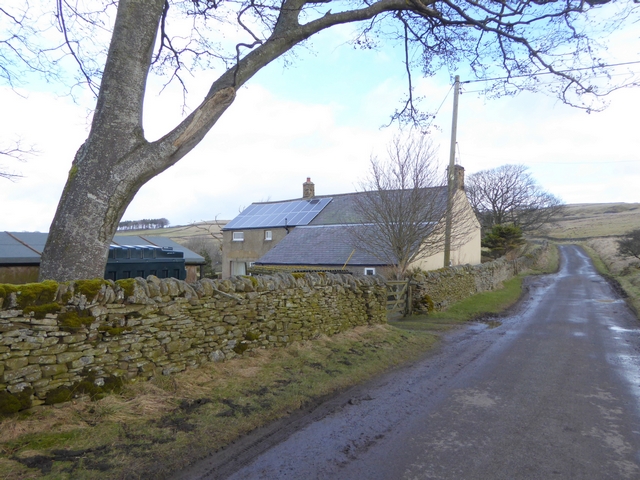
A recent photo of Leadgate farm at Allendale. Courtesy Oliver Dixon.
Parents William Calvert ( senior ) was 50 years of age in 1841, and was working as a Lead Ore Miner, and his wife Ellen was 45 years, obviously busy looking after William junior age 15 ( noted as a Lead Ore Miner ), John Russell age 14, Sarah age 8 and Mary only 9 months. Other surnames familiar to researchers in this tight knit community, were neighbours Hewitson, Robson, White, Martin, Allison, Wilkinson, Lee, Dixon, and Askew, many whom became inter-related. Scattered amongst them were a handful of farmers, including one farmer Brown, and only a few of the more successful ones appeared able to afford the odd house servant.

The Calverts may have been away on holidays, or out fishing in 1851 on the U.K. Census day, as no Census records were found for this family during this particular year, only a few years before the two sons came to Australia. Shortly afterwards, brothers William Calvert (Junior) and John Russell Calvert, literally began our family trend of emigration to Australia, firstly with their voyage on the Ann Dashwood in 1853, which lead to the commencement of their Gold Mining exploits around Piggoreet and Scarsdale near Ballarat in Victoria. Both William Calvert (Junior) and John Russell Calvert had previously married, Catherine Hewitson and Jane Coulson respectively, well prior to their departure to Australia. Their next younger sister Sarah, married Thomas Broadwood at Hexham in late 1857, and they too ventured to Victoria only a few months after their marriage.

Census Record of 1861 for William Calvert senior, wife Eleanor Allison (Ellen), and daughter Mary at Allendale.
Youngest child Mary, at the age of 20 remained at home with her elderly parents per the Census Record of 1861 shown above. Her occupation of "Charwoman" is described as a cleaning lady for large building. However, Mary too left for Australia in 1866, where she linked up with her soon-to-be husband Joseph Liddell a few months later, and they married in Victoria in the same year. It's interesting to note father William Calvert was listed as a "Late Lead Miner (Pauper)", which indicates times were tough for many families in Northumberland, and William and Ellen were probably unable to afford (and possibly too old), to consider leaving for Australia too. We have it from reliable source that William Calvert senior suffered Dimentia or Alzheimers in his later years.
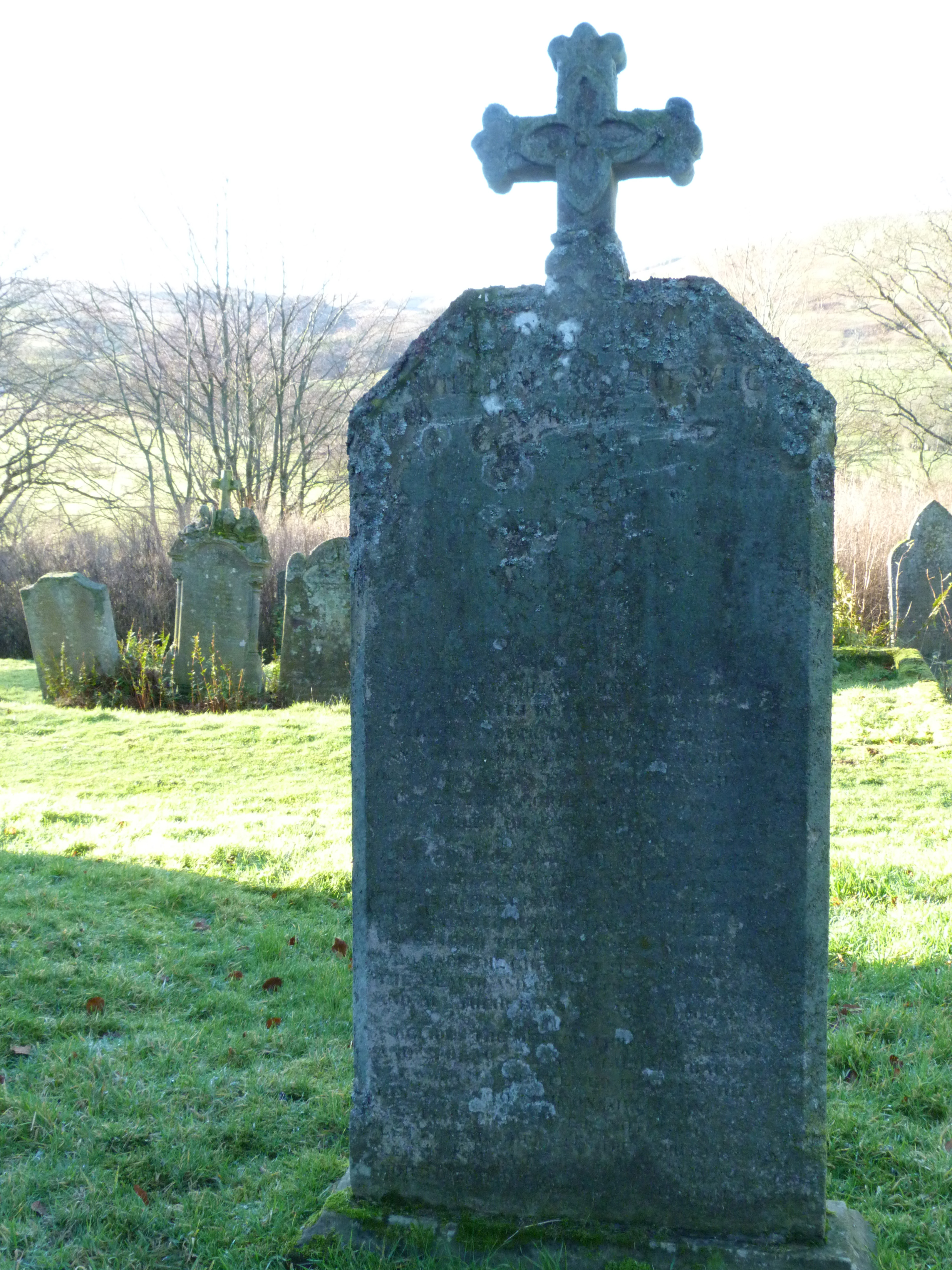
Headstone of William Calvert Senior and Eleanor Allison, Ninebanks Chuchyard - Courtesy Roger Morris of Pennines Isaacs Tea Trail in Northumberland.
On the gravestone of William calverts senior, and his wife Eleanor Allison, is inscribed "In loving memory of William Calvert who died at New House January 14th 1864 aged 79 years". The reference to Plato below this inscription, is noted as “Says Plato"
"Why should man be vain,
Since bounteous heaven hath made him great
Why look with insolent disdain
On those undecked with wealth or state
Can splendid robes or beds of down
Or costly gems that deck the fair
Can all the glories of a crown
Give health or else the brow of care?
The Sceptick King the burdened slave
The humble and the haughty die
The rich and poor the base the brave
In dust without distraction lie
Go search the tombs where monarchs rest
Who once the greatest titles bore
The wealth and glory they possessed
And all their honours are no more
So glides the meteor through the sky
And spreads along a gilded train
But when its short lived beauties die
Dissolves to common air again
So tis with us: Life is not long’
Let friendship reign then, while we stay
Let time be sweeten’d with a song
For when love calls we must obey”.
Also recorded on on this headstone, is the death of Eleanor Allison, wife of William Calvert senior above, and it's inscribed "Died October 18th 1865 aged 68 years". This is the last known traced record of William Calvert and his wife Ellen.
A desciption from a reputable source in the district, has described the later years of William during his Dimentia / Alzheimers stage of life, a quotation by Joseph Ritson who was a Primitive Methodist Minister, as follows -
“Another memory I have is of ‘Ode Cohvet” as he was called a harmless lunatic, who though he had a wife and home and children, roamed about the countryside, Olde William Calvert; but he was never spoken of except as ode Bill Cohvet,
With his crooked stick and ghastly face his big glow’ring eyes and his
solemn pace.
His locks so tangled, so fair and so long.
So Beak – like nose, so broad and strong.
The description is accurate if to that we add his peculiar odour, his harsh voice and uncouth garments. Whether he did anything for a living I am uncertain though I have a vague remembrance of him soldering leaky cans. He was an object of fear to us boys and yet we ever anon sought to provoke him so we had the fearful joy of having him in pursuit. What he would have done with us if he had caught us I don’t know.
His wife Ellen was a decent sort, and his sons emigrating to Australia made fortunes, we were told and in due course erected in Ninebanks churchyard an elaborately worded memory of their parents.
I recall the great comet which flamed in the night sky, the most amazing sight of the kind I ever beheld. Donati’s comet appeared in the sky in 1858, when I would be about 6 and many people feared the world was about to come to an end. Ode Cohvet became quite religious under its influence, read The Bible, and sought to prepare himself for the inevitable dissolution of the world, when the heavens were to pass away with great noise and the elements melt with fervent heat.
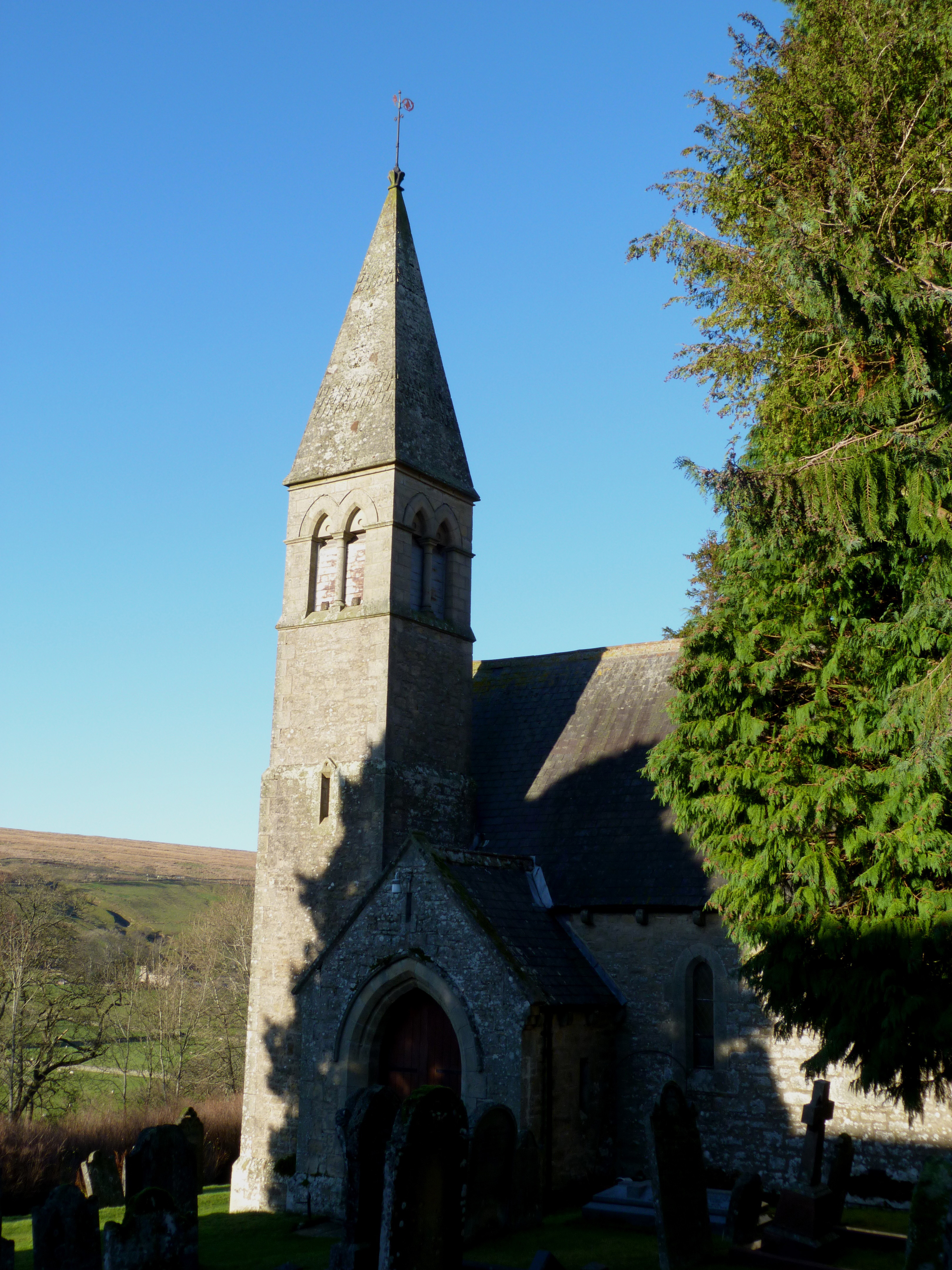
The Ninebanks churchyard where William Calvert and wife Ellenor Allison are buried - Courtesy Roger Morris.
But his crazed brain could not be expected to take into account. Multitudes of the sane were no more consistent.
There was however, method in Ode Bill’s madness. He told people that there were not ten but eleven commandments and that the eleventh was “Man mid thesel”. More curious still was his contention that God man worshipped was not an omnipotent being. Asked for his reason he promptly replied that he could not make a valley without two hills, so could not be an omnipotent being.
Lunatics, unless very violent and dangerous were permitted to go at large in those days. I never heard Ode Bill having done anybody any harm. He lived somewhere in Dryburn. The date of his death with sundry curious and learned allusions to Plato, can be found on his tombstone."

William and Ellen Calvert's offspring from 1824 to 1841.

WILLIAM CALVERT (JUNIOR) & WIFE CATHERINE HEWITSON
William Calvert (Junior) was born at Kirk Haugh in 1824 to William Calvert (Senior) and Eleanor Allison, and in 1849 at Gretna, in Dumfries Shire in Scotland, he married Catherine Hewitson, who was born at Kirk Linton in Northumberland in 1827. It appears William (Junior) and Catherine had an un-named child out of wedlock in 1849 who died in the same year, however they did have a son named William Hewitson Calvert who was born on 22nd July 1850 at Allendale, who survived to later tell a very interesting story of his emigration as a young boy of 4 years, to Victoria, Australia.

Timeline of William Calvert, his wife Catherine Hewitson, and his ascendants.
Catherine Hewitson was the third of five children born in 1827 at Kirk Linton to Edward Hewitson and Sarah Little, and Catherine's only other sibling to come to the Victorian Gold Rush was her elder brother John Hewitson. John Hewitson and his wife Mary Ann Forrester came to Victoria in the mid 1850s, and spent about 15 years on the Gold Fields and had 4 children there, however were the only ones of all our family emigrants who actually returned to England around 1869.

One of many references to Catherine's brother John Hewitson, a Gold Mining Manager, Secretary, and advisor
on the Victorian Gold fields near Ballarat.
Click here for more info of the Hewitson family from
Edward Hewitson born 1794 Kirk Linton, U.K.
When news of the Gold Rush in Victoria hit this northern region of England, brothers William Calvert (Junior) aged 28 and John Russell Calvert aged 21 decided to go together to Australia, arriving at Hobsons Bay (Port Melbourne) on board the Ann Dashwood clipper in Nov of 1853. As was often the case back in those days, the man of the family left his loved ones behind in the U.K. for the Victorian Gold Fields, and somehow arranged for their transport to Australia later on, as it turned out in both instances of these two Calvert brothers.
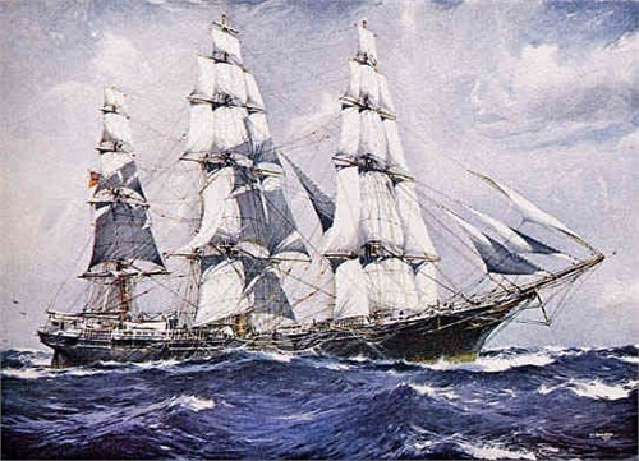
The Clipper named Ann Dashwood. Courtesy - ancestry.com Ref Mc Menamin.

Emigration record of brothers William Calvert (Junior) & John Russell Calvert on board the Ann Dashwood in 1853.
From diligent research into this Calvert family, it has been a delight to be able to piece together some of this family's activities and movements, directly from the extracts of William Calvert (Junior's) only son, William Hewitson Calvert, who was born in 1850 at Dryburn in Northumberland.

Portrait by photographer F. Howe of William Hewitson Calvert at Forbes, New South Wales - Circa early 1900s.
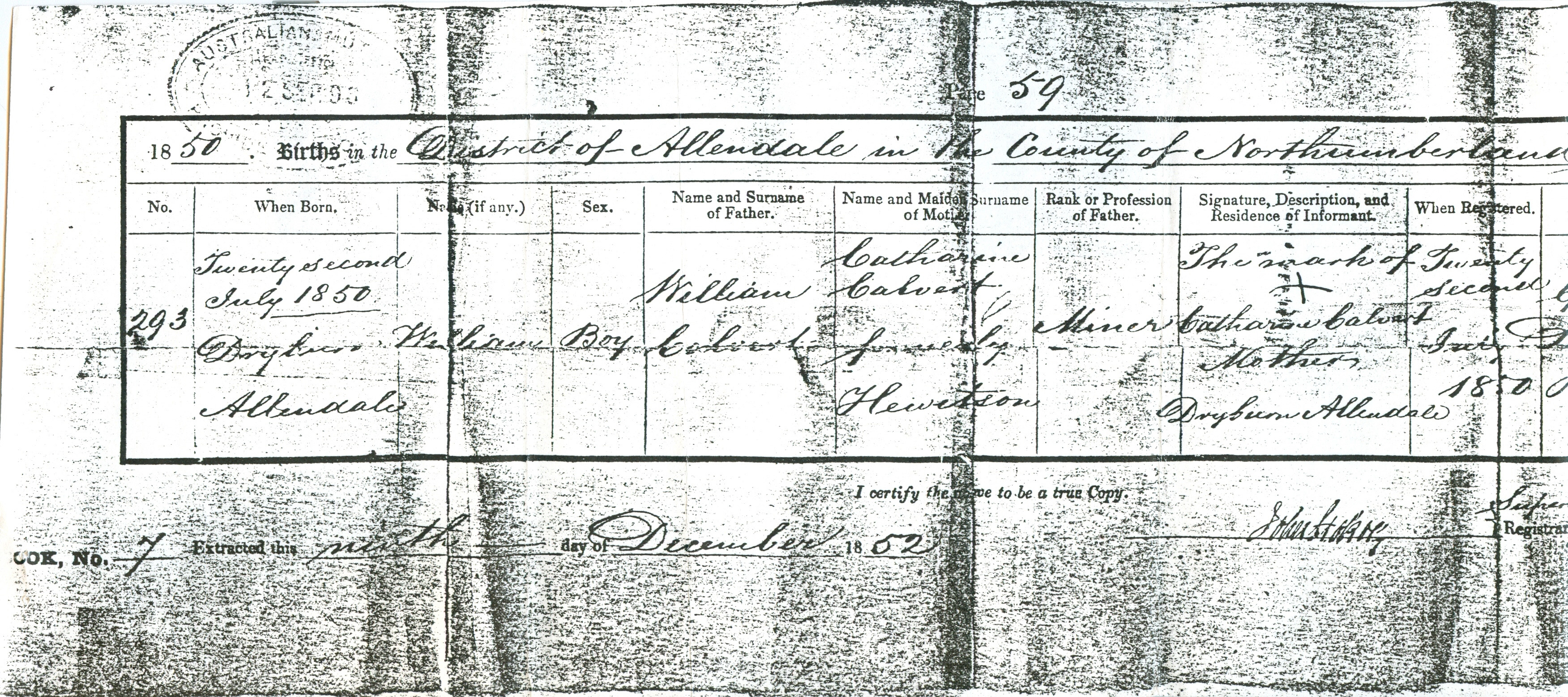
Birth Certificate of William Hewitson Calvert, born 22nd July 1850 at Dryburn, Northumberland, to William and Catherine Calvert.
The following important family record has enabled access to additional relevant info and newspaper cuttings, and especially of interest, a unique personal insight into the Eureka Stockade rebellion at Ballarat, as follows -
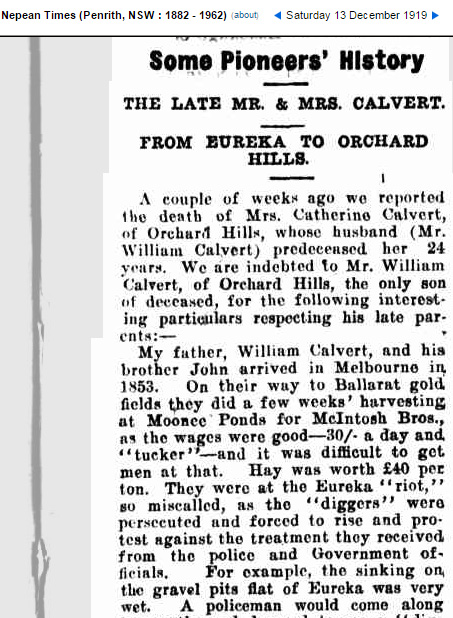
Cutting of family recollections by William Hewitson Calvert from his personal family tribute of December 1919.
To quote the words of William Calvert and Catherine Calvert nee Hewitson's only son, William Hewitson Calvert,
"My father, William Calvert, and his brother John {Russell} Calvert arrived in Melbourne in 1853. On their way to Ballarat Gold Fields they did a few weeks' harvesting at Moonee Ponds for Mclntosh Bros., as the wages wore good — 30/- a day and 'tucker' and it was difficult to get men at that. Hay was worth £40 per ton.
They were at the Eureka "riot", so miscalled, as the 'diggers' were persecuted and forced to rise and protest against the treatment they received from the police and Government officials. For example, thee sinking on, the gravel pits flat of Eureka was very wet. A policeman would come along frequently and demand to see a 'digger's mining rights. Perhaps it was in his tent, fifty yards away; but he was not allowed to go to get it. The policeman would then take him away to Camp Hill and chain him to a stump or log, sometimes all night, as there, was no gaol. Then the 'digger' would be brought before the Magistrate and fined for not having a miner's right on him. Captain Wise, who was in charge of soldiers from Melbourne, was astonished when he heard the diggers' cause after the stockade incident, and said he had no idea the men were so persecuted. Nuff sed!"
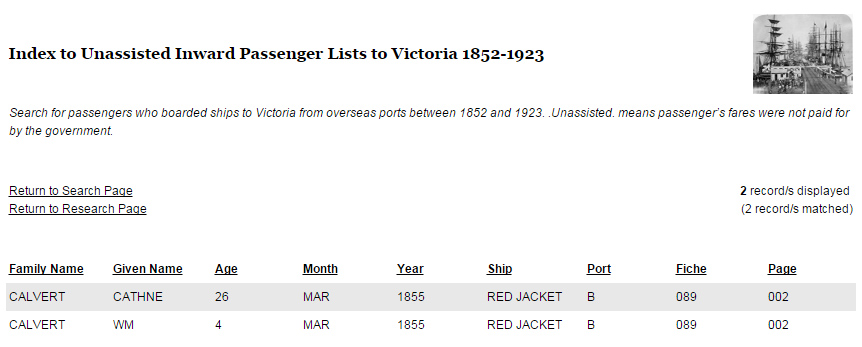
Emigration record of Catherine Calvert nee Hewitson & son William Hewitson Calvert on board the Red Jacket in 1855.

Photo of the renamed Red Jacket steam clipper - courtesy Texas Tech University.
"On March 25th 1855, my mother {Catherine Calvert nee Hewitson}, and I arrived in Melbourne, per 'Red Jacket' after a voyage of three months from Liverpool, accompanied by some neighbours from Northumberland, Éngland. My father met us in Melbourne, and then started for Ballarat in a covered-in cart containing goods and chattels."
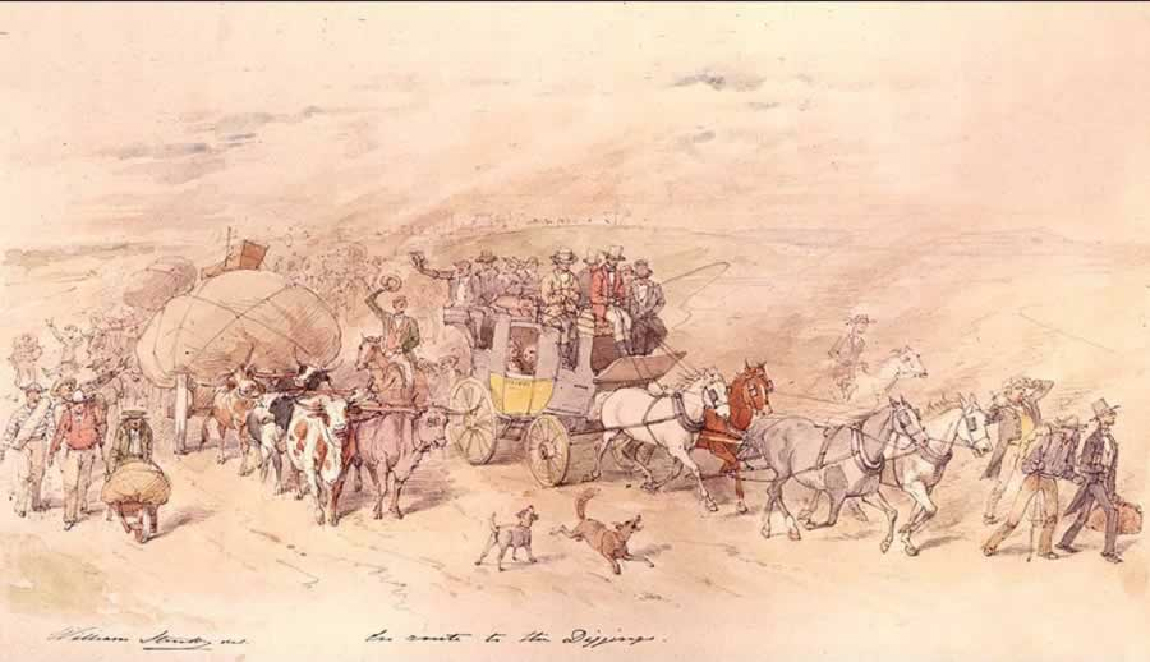
Many basic modes of transport to the diggings. William Strutt, artist, pencil and watercolour 1851 State Library of Vic ERGO.
William Calvert must have been quite successful on the Gold Fields, having a horse and a covered-in cart, after only about 16 months on the diggings in Victoria with his brother John Russell Calvert. The amazing recollections from William Hewitson Calvert, continues -
"Other carts were on the same track, and they travelled and camped together, as there were bush-rangers about in those days, and the men watched turn about throughout the night, with guns ready. One night they sighted a man prowling about, so they promptly challenged him and made him a prisoner, as he would not give any account of himself. After daylight they gave him some breakfast and told him to go. No doubt he was acting as a spy."
Old newspaper cuttings from these times about Gold Mining Shares such as the one below, give quite a clear indication of where family members were residing, as well as who they were working together with on the Gold Fields. This pattern or trend of family members teaming up their resources and skills and networking together was to great benefit on the Gold fields, as well as when most of them moved later on to farming and grazing together in East Gippsland.
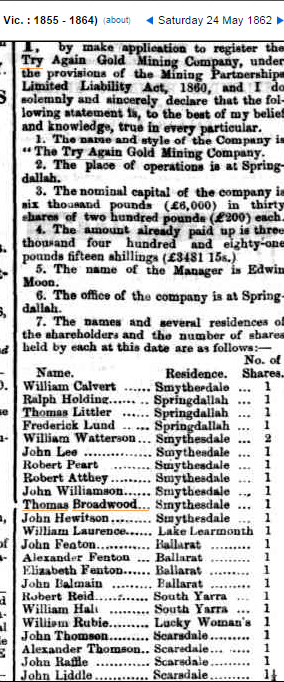  
At left above, early shareholders of the Try Again Gold Mining Company in 1862, which soon proved very rewarding financially to our family members, in particular the Calverts, Hewitsons, and Broadwoods. Kindly note, John Liddle (Liddell) listed at the bottom, was Mary Calvert's brother-in-law, and John also owned the nearby Try Again Hotel by 1860, apparently named after the Gold Mine.
At right above, a shareholders record of the neighbouring Cleft in the Rock Gold Mining Company from 1864, which was pretty much owned and managed by our family members, with two of Jane Coulson's brothers Joseph Coulson as Mine manager and Hugh Coulson, listed as the major shareholder. It also indicates John Russell Calvert was developing their first family farm properties on the Mitchell River at Bairnsdale, about 250 kilometres from the gold fields, whilst still investing capital into this mine from afar in East Gippsland.
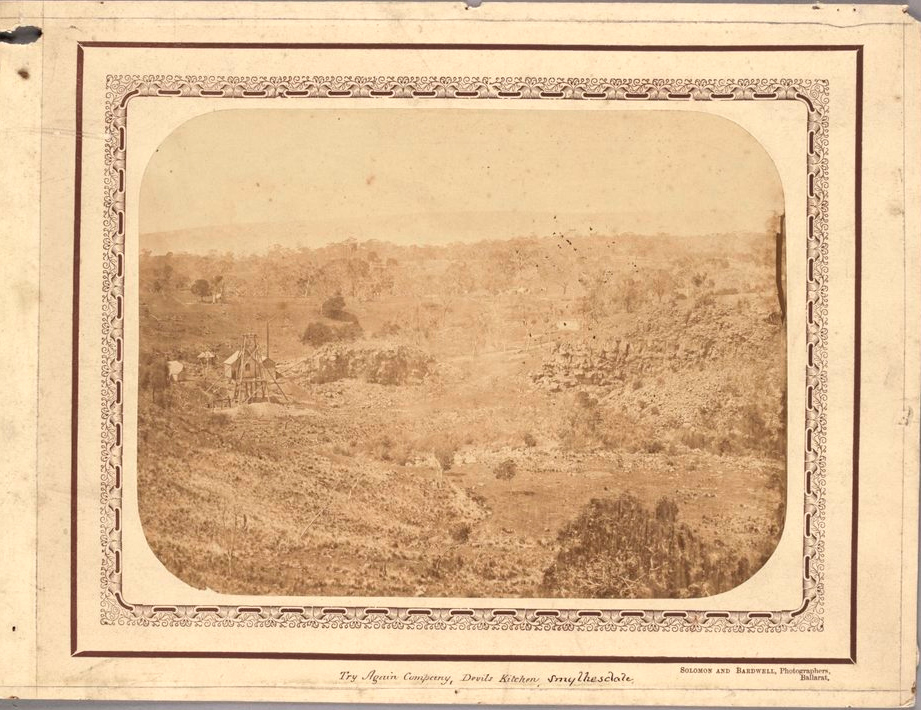
The Try Again Gold Mine in 1861 - Courtesy State Library of Victoria.
Before another two years passed, family involvement had expanded to include the related Coulson brothers Joseph and Hugh, in the neighbouring Cleft in the Rock Gold Mine. Historical records indicate the actual shafts of these two mines were so close to each other, they actually physically overlapped each other.
The regional Mining Surveyors report by surveyor P. Milner of 1860, regarding the Try Again Gold Mine, states
07.1860 Confirmed that the Linton and Lucky Woman's Leads pass through this company's claim. Ref 1171
09.1860 Have driven several hundred feet but have not yet found the gutter; they may be too high judging by the adjoining claim of the Cleft in the Rock Co. Ref 1172
11.1860 Have encountered trap rock abreast of their drive after driving for 900 feet; about 60 feet
above their drive is a reef which will pay about 0.5 oz per ton; this reef was found in the
Italians tunnel. The gutter which the Cleft of the Rock Co. found is below their tunnel. Ref 1173
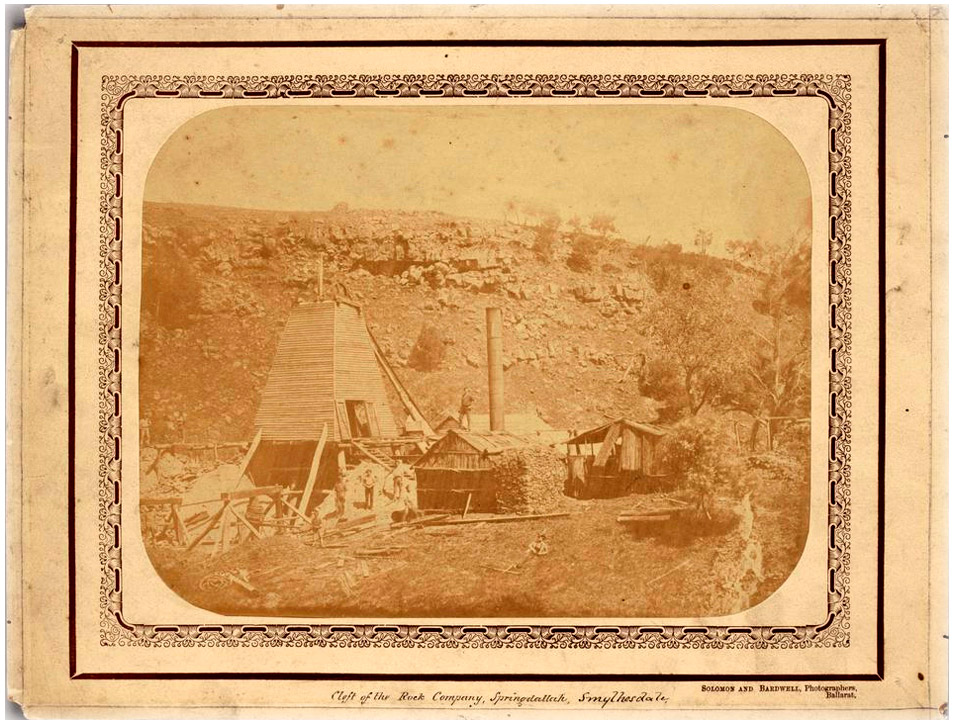
The Cleft in the Rock Gold Mine in 1860, a major family investment - Courtesy State Library of Victoria.
That's probably some of the Coulsons, Calverts, or Broadwood family pictured here, if you look closely at the 6 people shown in this particular old time photo.
Click here for more information about the
Victorian Gold fields near Ballarat.
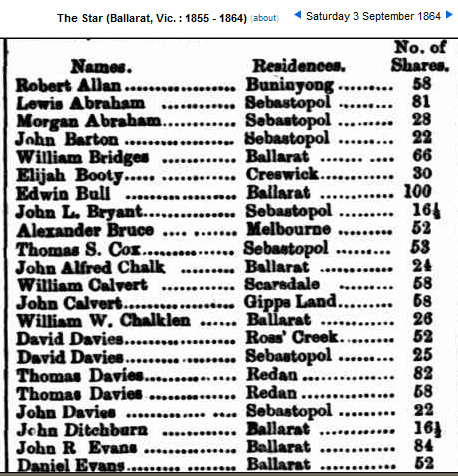
The Nelson and Wellington Gold Mining Company major Shareholders list, at Sebastopol in 1864 above, showing William Calvert (Junior) a resident of Scarsdale near Ballarat, and brother John Russell Calvert investing while residing at Calvert Flat at Wy Yung, on the edge of Bairnsdale.

William Calvert (junior's) shares in 1865 - Break O Day Gold Mine at Rokewood.
Continuing the Calvert family story, in the words of William Hewitson Calvert of 1919 -
"Father followed mining at Ballarat and Smythesdale for some years, then he and his brother selected land at Bairnsdale, Gippsland, in 1862. His brother {John Russell Calvert} looked after the fencing-in of the land selected. Then we all went to Bairnsdale in I866, and started farming and fattening cattle."
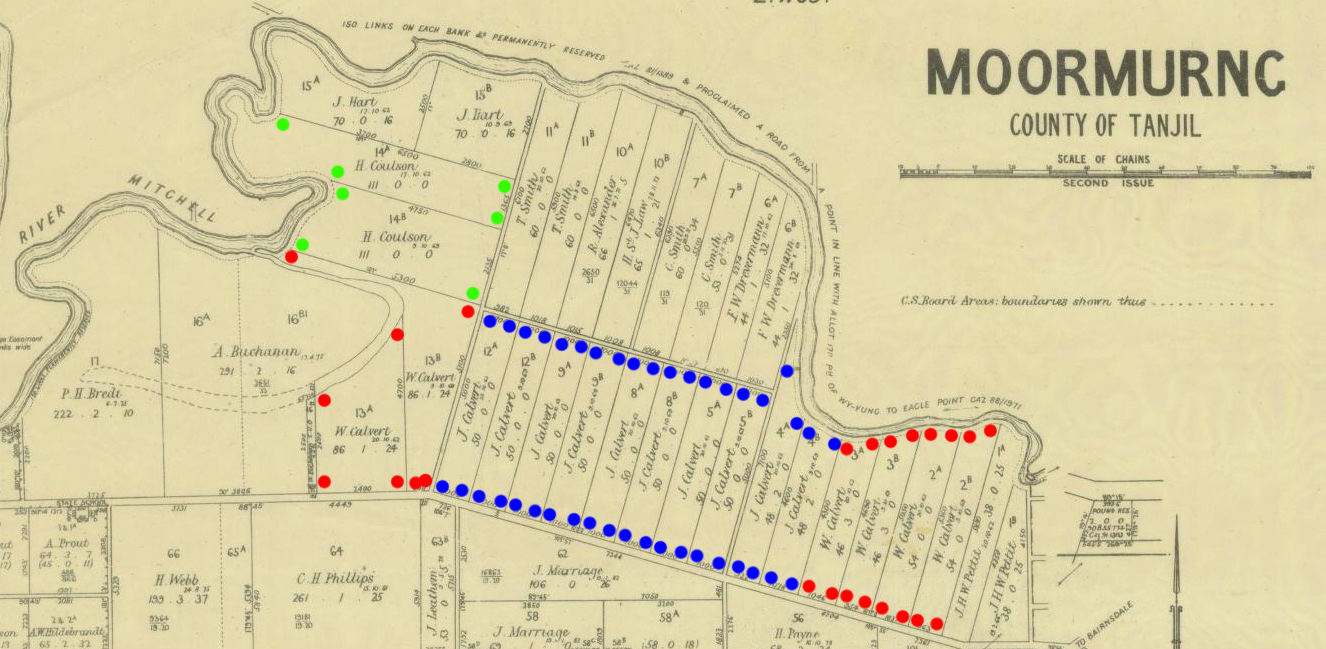
Wy Yung - Moormurng Parish map circa 1910 - Courtesy State Library of Victoria - Mitchell River on edge of Bairnsdale.
Borders of blocks of land owned by Hugh Coulson are in light green, those blocks bought by John Russell Calvert are highlighted in blue, and the borders of titles held by William Calvert are featured by red dots.
This map indicates two river frontage blocks owned by John Russell Calvert's brother-in-law Hugh Coulson, next door to 2 blocks owned by William Calvert, next to 10 adjacent blocks owned by John Russell Calvert, neighbouring on to another 4 of William Calvert's blocks.
One may only presume the many possible reasons why the Calvert brothers decided to move on to the green pastures of East Gippsland in 1862, to initially settle as graziers, and later with John Russell Calvert being recognised internationally as a major Victorian hop grower at Mossiface. A number of family and official sources state they were quite successful on the gold fields, and according to Mining Company Shareholder records William Calvert returned on occasions to the gold fields between 1862 and 1865, to inspect the family investments with brother-in-law Thomas Broadwood, while John Russell Calvert farmed and fenced in far East Gippsland.
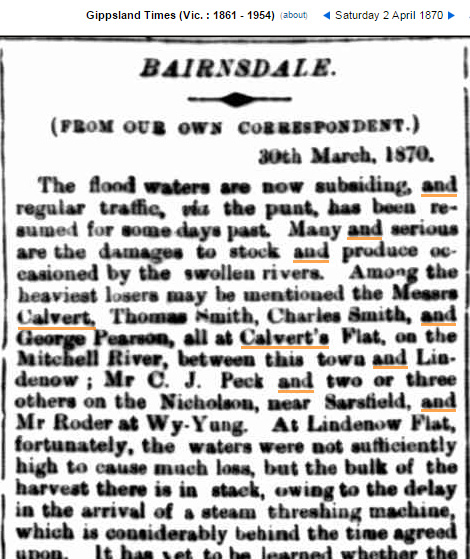
Floods at Calvert's Flat on the Mitchell River at Bairnsdale in 1870.
"Father {William Calvert Snr}, Uncle {John Russell Calvert}, Cousin {William Coulson Calvert} and I took a mob of 'fats' to Melbourne in 1868. In 1870 we had big floods which destroyed a lot of wheat, oats, and barley, and took the thrashing machine and winnower three miles down the river. But we recovered them again. They had over one thousand bushels thrashed out and cleaned, and, a lot more in stacks, which floated away and went to pieces."
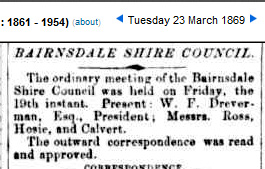  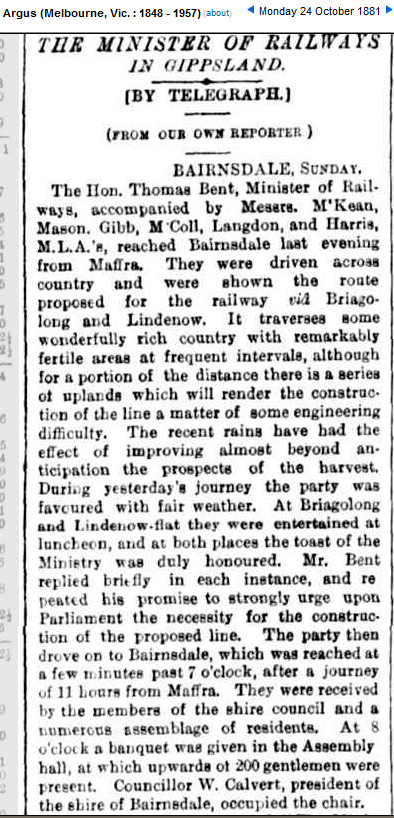
Both William Calvert (Junior) and brother John Russell Calvert were heavily involved in local community development, and they both contributed their time and energy as Bairnsdale Shire councillors, and also as the Bairnsdale Shire President.
The building of a railway line to Bairnsdale and later on to Orbost, was a bid deal for the development of the region, obviously a fact recognised and supported especially by William Calvert. An extract from: “Some Historic Buildings in Bairnsdale” – Local History File 78900434d states "In the days before the railway reached Bairnsdale, passengers were forced to leave the train at Sale. The train would arrive in Sale at 12:50pm, from there a coach would take passengers on to Bairnsdale, arriving by 7pm, taking almost as long to traverse the bad roads as the train took to travel from Melbourne to Sale.
In January 1888, a canvas town sprung up around the railway area in Macleod Street, and arrangements to build the terminal began. Early January saw the arrival of the first train in Bairnsdale with a parcel of orders for Joseph Messenger, an agent for Permewan Wright. On 15th January, the direct link with Melbourne was established when a flag-bedecked train left the temporary Bairnsdale station at 1:30pm, arrived at Stratford at 3:30pm, and returned to Bairnsdale in time for dinner. On 8th May, 1888, the railway was officially opened. A train left Traralgon with bandsmen picking up more at Stratford. This was followed by a train from Sale with more Bandsmen. This large bands concourse paraded the streets of Bairnsdale to the cheers of the citizenry."
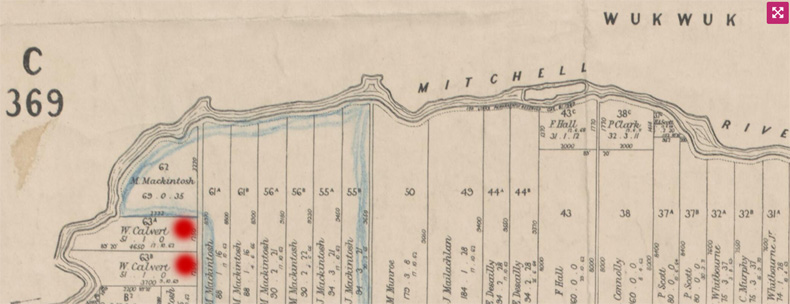
Two farm blocks totalling 104 acres on the Mitchell River near Lindenow, noted in red, owned by William Calvert in 1888.
Courtesy - National Library of Australia.
Other family members were also involved in regional development by rail, including William Latmos Vipond, who was a shire engineer who worked on the trestle bridge at Hospital creek and the trestle railway line from the flats below Newmerella to Orbost. William Vipond's nephew, Jack (John Victor) Richardson, your web host's grandfather, was also a carpenter who worked on the building gang at the Hospital Creek trestle bridge in 1914.
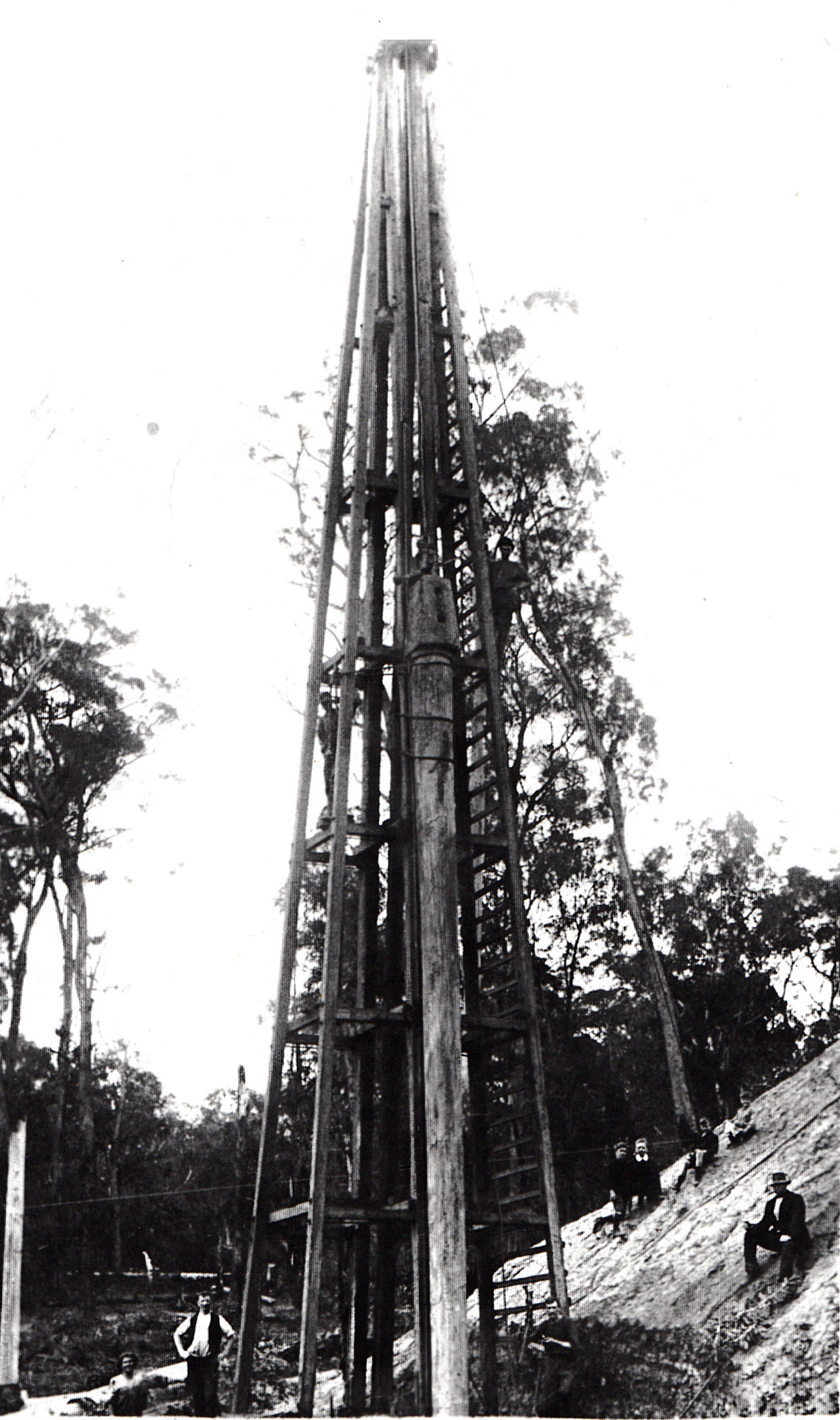
Typical Picture Photo postcard of this era, showing the pylons going in for the Hospital Creek trestle bridge.
This is Jack Richardson's work crew with his uncle William Vipond in charge in 1914.
Click to enlarge then Backspace to this page.
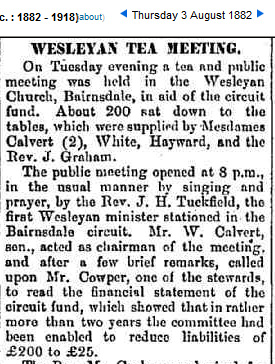
William Calvert, his wife Catherine and sister-in-law Jane were involved in the local Wesley church movement in 1882.
More words from William Hewitson Calvert -
"My father was a councillor in the Bairnsdale shire for a number of years, and did his term as president. In 1871 we started to breed remounts for India. In 1885 we sold out in Gippsland, as I suffered from asthma and bronchitis, and came to Forbes."
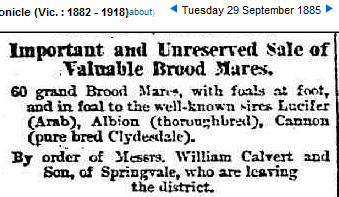  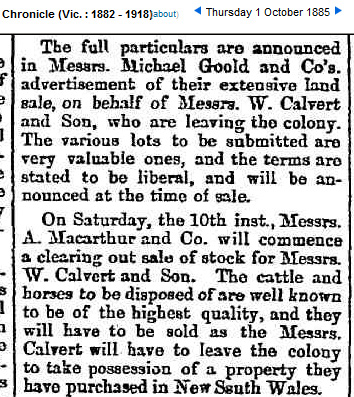
"We were just stocked upon the Lachlan when the big drought of 1889-90 set in, and we had to clear the stock off again and sell the station. Then we tried a place near Molong, but it was no good for sheep. Then we tried North Bangaroo for three years. Eventually we returned to Forbes, and tried wheat growing, but it was no good; all we could get for good milling wheat at Forbes in 1901 was 1/10 to 2/1 per bushel.
A co-operative butter factory started in Forbes, add was all right for a time. We had thirty cows, but then it came in dry, and the factory closed down for want of suppliers. So I sold out and brought my cows to Orchard Hills; but tho drought of 1902 came on before I had time to grow fodder, and buying soon knocked a hole in my drum, so I gave up dairying, and now my sons and I grow peas and fruit."
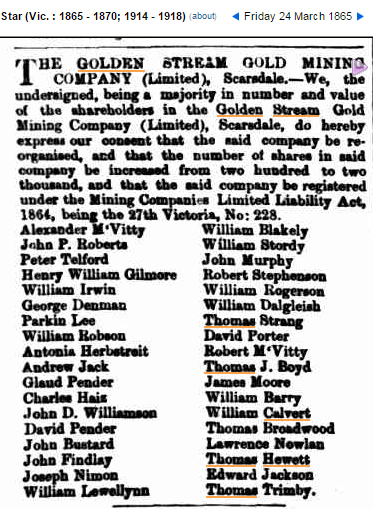  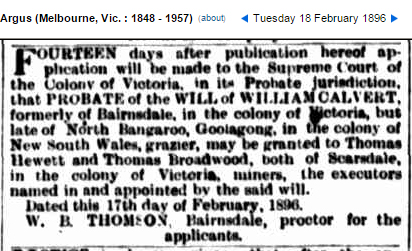
At left, one of many of William Calvert (Junior's) Gold Mining investments, with brother-in-law Thomas Broadwood and good mining mate Thomas Hewett, both listed as Executors in his Last Will and Testament.
"My father died at North Bangaroo on December 24th, 1895, aged 72, and was interred in Nyrang Creek cemetery. His brother John is still alive in Gippsland, and is about 88 years old. But his memory is gone; he knows nobody. My mother had been with us through all the changes, and is now resting from her labors."
CATHERINE HEWITSON Wife of William Calvert
Catherine Calvert nee Hewitson was born in 1827 at Kirk Linton, Cumberland, England, the third of five siblings, in between Mary then John, and her two younger sisters Sarah and Jane. Catherine married William Calvert in 1845 in Cumberland, and 10 years later, was obviously convinced that the long and precarious voyage by sea to Australia was worth while. She arrived at Hobsons Bay Melbourne on 25th March 1855, along with her son William Hewitson Calvert, and some of her old neighbours from Northumberland, on board the vessel Red Jacket.

1841 U.K. Census record of the Hewitson family at Kirk Linton showing Catherine aged 14.
As indicated in this 1841 Census record above, Catherine's mother Sarah Little had already passed away in 1835, leaving her father Edward, a tailor by trade, to fend for, and feed the five children. This was the last Census Edward Hewitson ever completed, as he died shortly after the Census in 1841, and the children were not found living together on the subsequent Census in 1851.
According to her death certificate, Catherine was born in 1827, which ties in with her 1841 Census record, later married William Calvert in Gretna, Scotland in 1849 at the age of 22, and lived to the age of 92. However as is often the case in old time records, there can be a minor difference of record details, as per the Victorian Inward Passenger List already shown above, Catherine's birth year would be 1829.
Having briefly looked here into some of the known activities and travels of her husband William, and how other family members, (including her brother John Hewitson) networked together early on in their plights to "strike it rich" at the diggings, Catherine must have been a fairly dynamic and energetic personality. For some 70 years, she was the wife of a Lead miner, Gold digger, major shareholder, cattle and sheep grazier, horse breeder, grandmother of 14 children, an aunty, and somewhere in there too, the wife of the Shire President of Bairnsdale.

Headstone of Catherine Calvert nee Hewitson - Courtesy Jeff Butler per ancestry.com
A busy lady and life in anyone's terms, and by reading her son's very personal and informative tribute (ie. William Hewitson Calvert), one can piece together a fairly good impression of Catherine's life path and responsibilities. Why William Calvert and brother John Russell chose East Gippsland to select land and settle, it is not known, yet is may be viewed as yet another example of great family networking and teamwork, as the Richardson, Vipond, Cochrane, Liddell, Coulson, and Bell families all eventually followed the Calvert brothers to East Gippsland.

Death Certificate of Catherine Calvert nee Hewitson of 1919, when she died at Orchard Hills Penrith, New South Wales.
Catherine's concerns of her sons asthmatic and bronchial complaints, probably played a major role in this Calvert family selling up at Bairnsdale, and moving to a dryer climate near Forbes in South Eastern New South Wales in the late 1880s. Catherine Calvert nee Hewitson passed away at Orchard Hills, near Penrith in Western Sydney, New South Wales.
Click here for more information about the Hewitson family
from Edward Hewitson born 1794 Kirk Linton, U.K.

JOHN RUSSELL CALVERT & WIFE JANE COULSON
From family recollections and additional relevant information already covered, we know for sure that brothers William (Junior) and John Russell Calvert partnered well together in many ventures of life, often including many other family members along the way. It does appear logical to assume that from the information and images available relating to John Russell Calvert, eg. being an innovate hop grower and race horse breeder, he may have been a little more entrepreneurial than his brother William Calvert. It is great to be able to present such wonderful portrait photos of both John Russell Calvert and his wife Jane Coulson, both born in the early 1830s in Northern U.K.
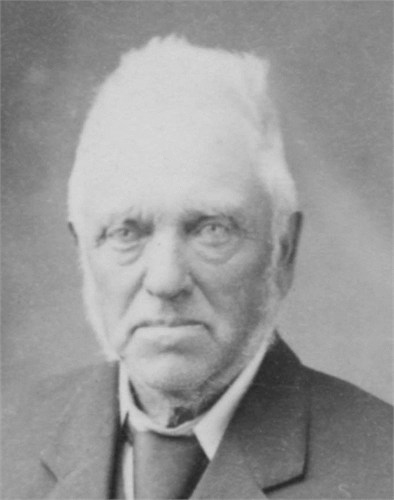  
John Russell Calvert,  John's wife Jane Coulson. John's wife Jane Coulson.
Studio Photo taken in 1903. Courtesy http://arrow.monash.edu.au/hdl/1959.1/70376
Written permission for reuse - Federation University Centre for Gippsland Studies, Monash Uni Research Repository.
Our earliest time frame notations on John Russell Calvert, starts out as follows:
Birth 1831 31 Aug Stotgill, Caldbeck, Cumberland, England, U.K. Baptised Caldbeck 11 Mar 1832
Residence 1841 UK Census — Age: 10 Allendale, Northumberland, England Son of Lead Ore Miner.
Marriage to Jane Coulson 1853 Jan — Age: 21 Allendale Northumberland England
Address 1853 Jan — Age: 21 Ninebanks Allendale, UK per location at birth of son William Coulson Calvert.
Emigration Arrival in Victoria in Nov 1853 on board the Ann Dashwood, with brother William Calvert.
Return to England In 1858 to pick up wife Jane and son William on board the Royal Charter.
Land Selection 1862 on the Mitchell River at Bairnsdale, neighbouring brother William, and brother-in-law Hugh Coulson.
Piecing together a summary of a persons life, from an array of unrelated info and images, whom nobody alive today personally recalls, is quite a difficult task. If we could locate an old letter, biography, or even an 1851 Census record, it would probably show us his vocation, most likely a Lead Ore Miner or Washer, like most of his neighbours and cousins.
Referring to the array of info outlined in this brief overview, one may surmise he was a team player, a great networker, and a very family orientated man, working well and investing together on the gold fields with his brother William, and also brothers-in-law Thomas Broadwood and Hugh Coulson, were generally close by.
Research of Passenger lists has not divulged data as to exactly when John Russell Calvert returned to England to pick up his wife Jane Calvert nee Coulson and his only son, William Coulson Calvert, born in Jan 1853 at Ninebanks, Allendale in Northumberland, nearly two years before his first trip to Australia. It is unclear as to how he was able to afford a voyage back to England to accompany his family to Victoria, but from his nephew's writings about his brother being able to afford a horse and cart, then it is likely John Russell Calvert also had some successes on the diggings between 1855 and 1858 when he returned to England.
Somehow, he did arrange the travel plans and costs of his family to join him back in Victoria, and they came to Hobsons Bay in Melbourne, on board the clipper, the Royal Charter on the 11th March in 1858.
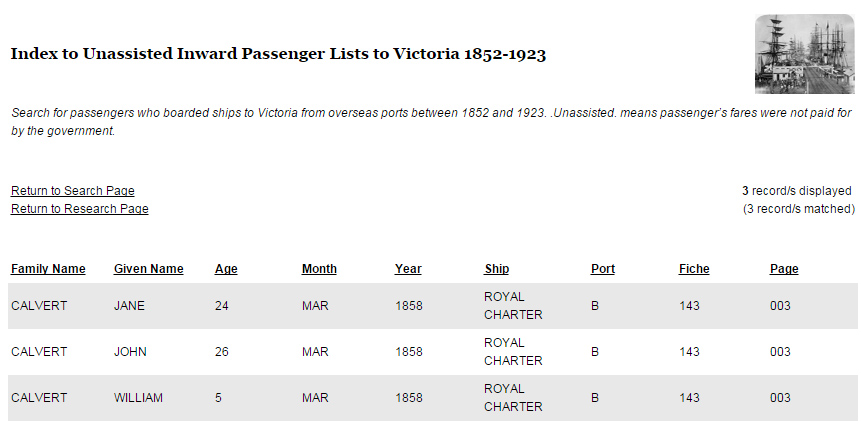
Emigration record of John Russell Calvert, wife Jane Coulson and only son William Coulson Calvert on board the Royal Charter in 1858. Obviously John Russell Calvert returned earlier to the UK to pick up and return with his wife Jane Calvert nee Coulson and their son in 1858. It appears John Russell Calvert may have also played a part in convincing his sister Sarah and her husband Thomas Broadwood to join them on the very same voyage, as shown below.
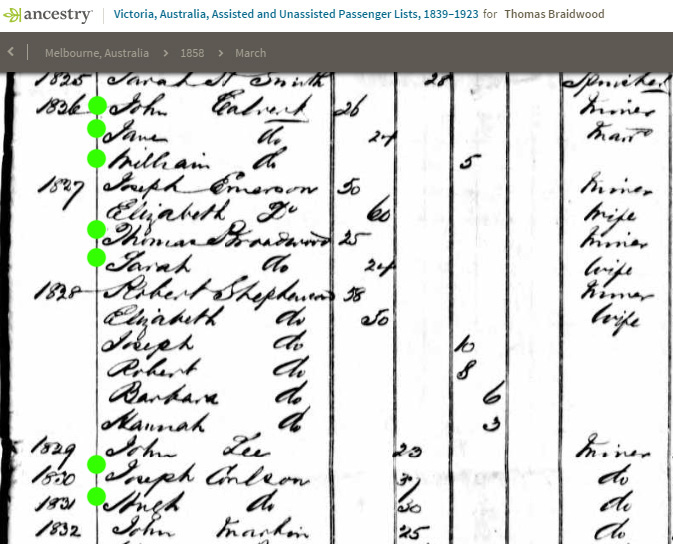
Family members who emigrated on board the Royal Charter in 1858 are highlighted in light green.
Original handwritten emigration record of John Russell Calvert, wife Jane Coulson and only son William Coulson Calvert, John's sister Sarah Broadwood and her husband Thomas Broadwood, and of course brothers Joseph and Hugh Coulson (junior), all travelling together on board the Royal Charter in 1858.

Promotional advert boasting travel from Liverpool to Melbourne in 40 days on the steam clipper Royal Charter.
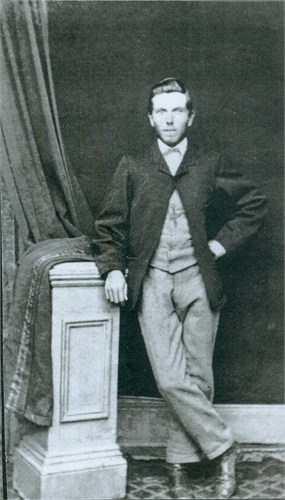
John Russel Calvert and Jane Coulson's only child, William Coulson Calvert born in Jan 1853 at Ninebanks, Allendale, U.K.
William Coulson Calvert married Mary White, from Wetsbury in Tasmania, in 1884 at Bairnsdale Victoria, and subsequently had and 4 sons and 7 daughters.
Click here for more information about the family of
William Coulson Calvert and Mary White in Gippsland Victoria

Family Gold Mining shares in the Cleft in the Rock Company in 1864 at Springdallah ( Devils Kitchen ) south of Scarsdale near Ballarat.
As to his involvement and financial success with the Try Again and the Cleft in the Rock Gold mining companies, John Russell Calvert was most likely happy with the income made during the early to mid 1860s on the Gold fields, hence his permanent move to East Gippsland in 1862 to graze cattle, breed race horses, and grow hops.

Mining Intelligence report from Sydney on good finds at the Cleft in the Rock claim in 1863.
From referral to numerous Gold Mining shareholders listings in this period, it seems John Russell Calvert consistently resided in East Gippsland while still investing in Gold Mines near Ballarat, whereas brother William fluctuated near the townships of Piggoreet, Springdallah, Newtown, Scarsdale, south west of Ballarat during this period.
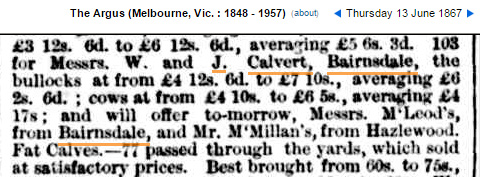
First recorded note of fattened bullocks for sale in Melbourne by John Russell and William Calvert, raised Bairnsdale 1867.
From the previous map of Moormurng, we know John Russell Calvert and William Calvert both still owned land around 1910 on the Mitchell River that they had selected in 1866, yet it has not been possible to ascertain about when John Russell Calvert relocated his primary interests of growing hops and breeding race horses to Mossiface, about 4 miles from Bruthen and very close to the Tambo River.
This was quite a substantial property of 1100 acres, named Mossiface Park due to its own private horse racing track. At times John Russell and Jane Calvert would have had up to 30 or 40 or more hop pickers and farm workers on site to supervise, as outlined further on. The Calverts still continued to invest in some Share interests in local mines in the 1880s too.
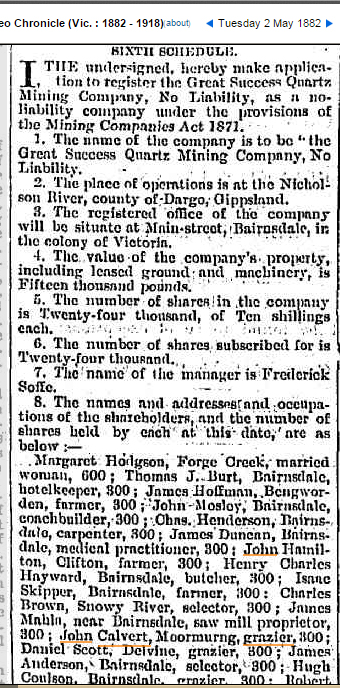
Shareholders listing for the Great Success Quartz mining Company at Nicholson in 1882.
For example, the above record shows John Calvert had 300 shares in the local Great Success Quartz Mining company, based on the nearby Nicholson River, along with his brother-in-law and neighbour Hugh Coulson, who also bought 300 shares. It would appear from his Gold and Quartz Mining shares, income from grazing fat calves and bullocks, and the odd horse racing punt, John Calvert was an exceptionally wealthy man of these times, and could well afford to enjoy his and Jane's passion for breeding and siring and marketing very expensive race horses, as below.
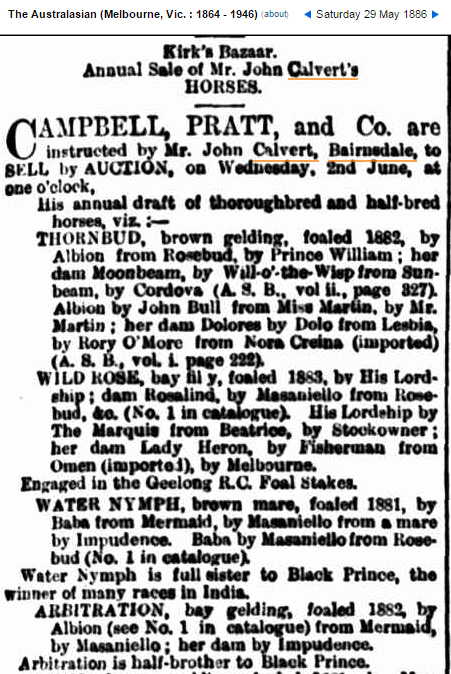  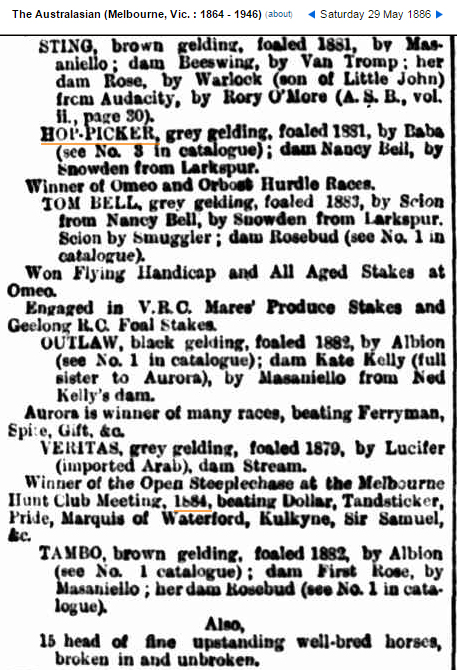
Thoroughbred horses were a major part of John and Jane Calverts lives - he bred and sold them, and she bought and sold them too, as in this example of their Annual Horse Sale in Melbourne in 1886, as shown here.
A substantial amount of research into John Russell and Jane Calvert's involvements into the local East Gippsland horse racing and breeding industry of the times, has revealed that
#1 John Russell Calvert was the President of the Bruthen Turf Club around the turn of the 20th century, till at least 1905.
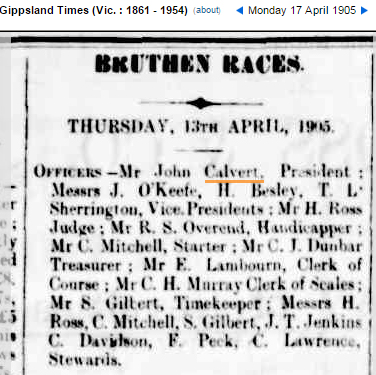  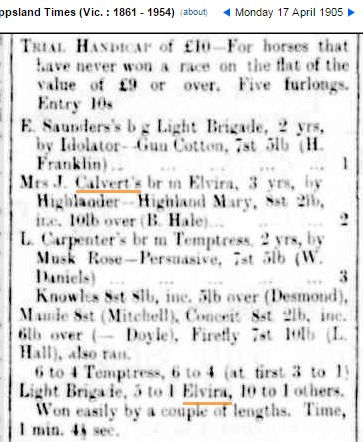 #2 Jane Calvert was noted in 1905 as the actual owner of Elvira and John Peel pictured below, & numerous other very successful thoroughbred racing horses.
#2 Jane Calvert was noted in 1905 as the actual owner of Elvira and John Peel pictured below, & numerous other very successful thoroughbred racing horses.
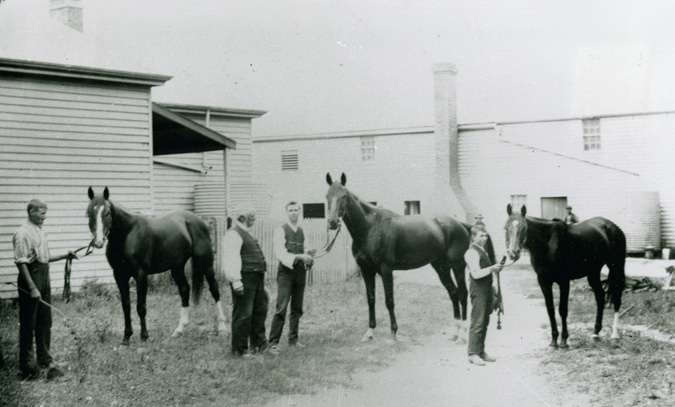
John Russell Calvert and his racehorses, Mossiface - Courtesy http://arrow.monash.edu.au/hdl/1959.1/70374
Written permission for reuse - Federation University Centre for Gippsland Studies, Monash University Research Repository.
From left to right, well known successful race horses Cumberland, John Peel, & Elvira, which are held by their respective jockeys, with John Russell Calvert pictured standing second from the left Circa 1905.
#3 John Russell and Jane Calvert bred and owned well sought after, and very expensive race horse breeding sires, including John Peel, Elvira, Highland Lassie, Feathertop, Hurricane, and Veritas, definitely owned by Jane, plus Cumberland, Pirate King, Lucifer, Highlander, and Godwin Laddie, along with numerous other well known thoroughbreds of this era and region.
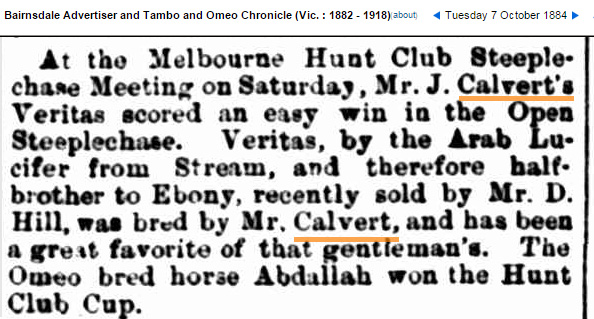  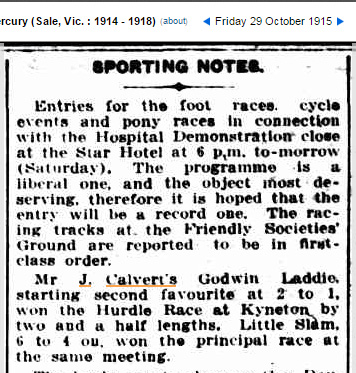
At left, an early newspaper cutting from 1884, to at right, the last reference of the Calvert's racing interests in 1915.
#4 The Calvert's 1100 acre property, was in newspaper cuttings of 1907, named as "Mossiface Park", which successfully hosted the annual Bruthen Turf Club race meeting, on the Calvert's private race course, on site.
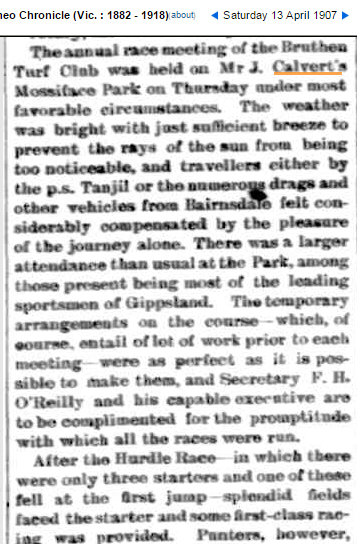
As far as John Russell and Jane Calvert's dealings within the local Hop growing and processing industry are concerned, one may assume their attitude towards producing a substantial and viable quantity of quality hops for regional beer brewing and medicinal purposes was quite serious, and was really quite an amazing business venture for those times.

Hop pickers at Mossiface, Creator Arthur W. Burman circa early 1905
Courtesy http://arrow.monash.edu.au/hdl/1959.1/70346
Written permission for reuse - Federation University Centre for Gippsland Studies, Monash University Research Repository.
That's John Russell Calvert in the middle of the foreground with his trusty white dog.
It seems appropriate to include a well researched overview of the Calvert's hops operation by the Victorian State Government Department of Heritage Database, as follows:-
Statement of significance. Courtesy Victorian Government Heritage Database.
"John Calvert arrived in Melbourne in 1853 from Northumberland. John and his brother William were successful diggers on the Ballarat fields and, after travelling back to England to fetch their families they moved from Ballarat to the Bairnsdale area where they selected adjoining land at Hillside. John also selected more land on the Tambo river flats at Mossiface. At one time this holding amounted to 1100 acres selected under the Duffy Act for £1 per acre.
The hop growing industry began in Victoria with Charles Barton's experiments on Lake Wellington using cuttings from Tasmania. The Mitchell valley at Bairnsdale became the first and most important growing area until well into the 1890's. In 1872 Alfred William Howitt built the first hop kiln in the district, other growers soon followed his example. The kilns were mainly constructed of timber, hence few have survived.
By the 1880s there were several hop gardens near Bruthen and Mossiface was the principal area. John Calvert was a pioneer grower and one of the very few still cultivating hops into the present century."
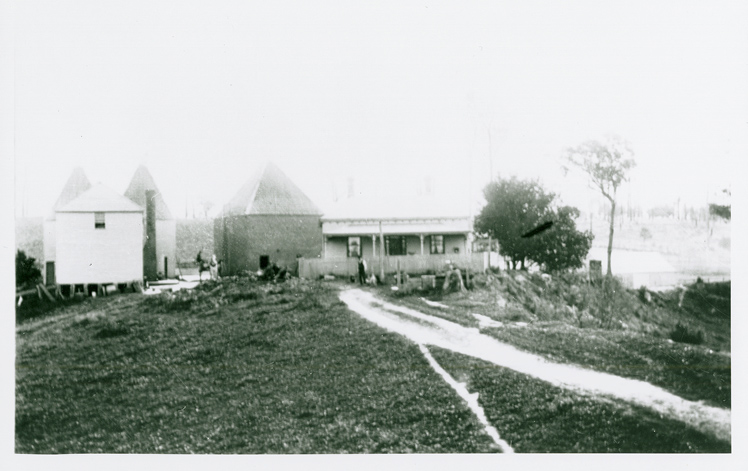
Hop pickers at Mossiface, Creator Arthur W. Burman circa early 1905
Courtesy http://arrow.monash.edu.au/hdl/1959.1/70346
Written permission for reuse - Federation University Centre for Gippsland Studies, Monash University Research Repository.
"Calvert's kilns are believed to date from 1881 although it is not clear whether the brick or weatherboard structure was the first constructed. According to Torpey and Rosehill ("The Gap Magazine? 1964, p27) the hop kilns were built in 1881. (At this time the Ovens Valley industry had not yet developed).
The Calverts were highly successful growers and attracted a large crowd of pickers who could take 3 weeks to complete the picking. Across the road from the kilns are the remains of a kitchen with a central chimney and the pickers? Quarters which are little more than a chimney with a lean-to post supported roof and lines of stumps. A second pickers' complex is over the hill from the first."
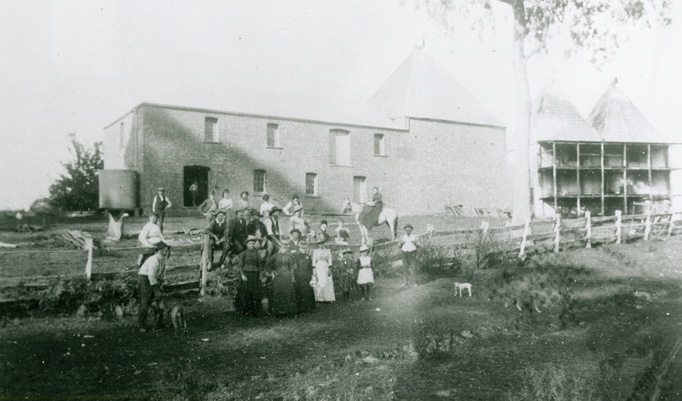
Mossiface hop kilns - Creator Arthur W. Burman Circa 1885. Courtesy http://arrow.monash.edu.au/hdl/1959.1/70342
Written permission for reuse - Federation University Centre for Gippsland Studies, Monash University Research Repository.
Another fine photo of John Calvert's trusty white dog rounding up hop pickers in front of the Hop Kilns.
"The main complex exhibits a high degree of intactness and high integrity. The kilns possess their original but deteriorated shingle roofs. Water entry has however started to cause serious deterioration the complex consists of a timber house of the 1880s, a 2 storey timber store with two hop kilns and a 2 storey brick store with an area at the end where another hop kiln used to be located. The inverted pyramidal base and roof have been removed and there is a new gable roof over this area. The bricks were made on the property and the timber was milled locally.
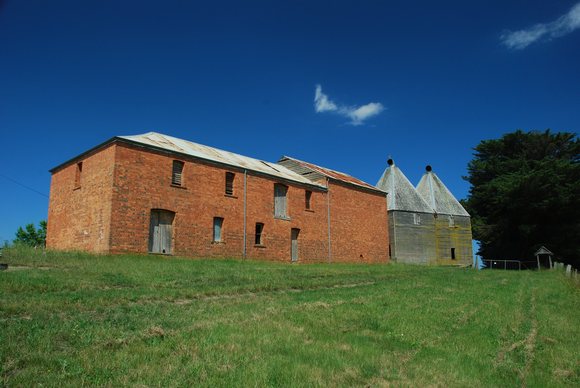
Modern Photo of John Russell Calvert's kilns from a similar aspect taken in 2005.
Courtesy Victorian Government Heritage Database.
"The weather board store contains a hop press which was loaded from the first floor and used to stock the ground floor store. Originally the hops were taken to the Mossiface wharf on the Tambo River and shipped to Bairnsdale by steamer."

Hop wagons at Mossiface. Courtesy http://arrow.monash.edu.au/hdl/1959.1/70354
Written permission for reuse - Federation University Centre for Gippsland Studies, Monash University Research Repository.
John Russell Calvert even went to the extent of exporting a nominal quantity of Tambo hops specifically for export back to the United Kingdom, according to newspaper reports from New Zealand of those times, which apparently proved not so financially successful.
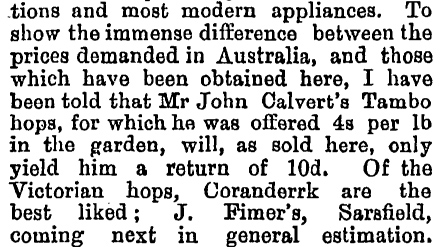
New Zealand newspaper, the Hawkes Bay Herald, report of John Russell Calvert's hop exports to England in 1883.
It is also of noteworthy point of interest, to also mention that amongst John Russell Calvert's ventures into the local horse racing and hop growing industries, he also contributed his efforts and time and energy, into other important interactions in the local community, being in particular, a considerable term as a Bairnsdale Shire councillor (1882 to 1884) and also The Shire President (1884 to 1886), as his brother William also carried out earlier.
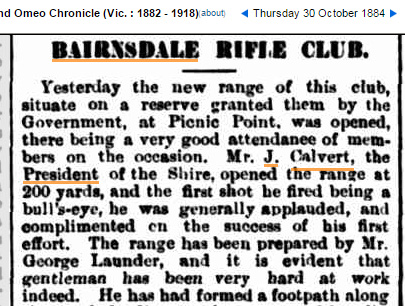  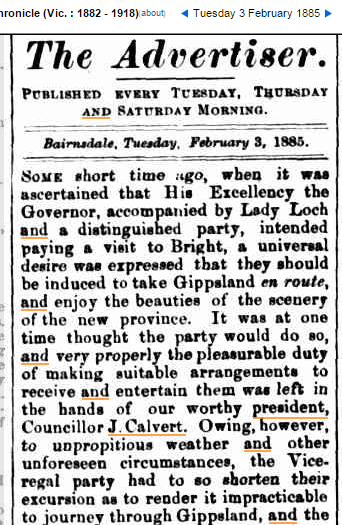
Cuttings relating to John Russell Calvert's term and activities as Bairnsdale Shire President, in 1884 and 1885.
John Russell Calvert also took time out for travel. At the age of 72 in around Aug of 1903, he took his wife Jane on a trip back to England, stayed there something like just under 2 months, and then returned to Port Melbourne on board the S.S. Persic in Dec of 1903. There appears to be no obvious logical or specific family reasons why John and Jane Calvert returned to England during this period, perhaps it was just a well deserved holiday, or maybe they were simply homesick ?
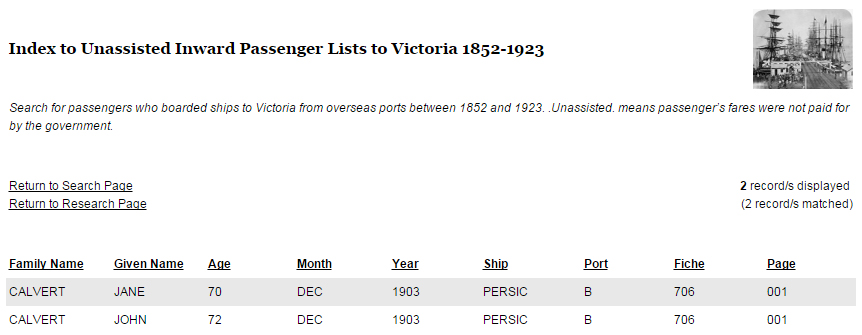
Passenger Record of the Calvert's return voyage on the S.S. Persic in 1903.
It seems important to raise the fact that at this point in time, that out of their 11 grand children born to William Coulson Calvert and Mary White, only the eldest grand daughter Jane, was living with John Russell and Jane at Mossiface Park, as noted in the 1903 Census shown below. This Census lists the occupation of grand daughter Jane as "Home Duties", yet even more interesting, it notes Jane Calvert nee Couslon, as a very hard to distinguish "Land Owner".

Census of 1903 showing Jane Calvert nee Couslon (the second Jane shown here) as "Land Owner" - a very unusual position for any woman of this era.
Kindly note we believe first Jane Calvert listed here was their Grand daughter, who seems to exchange the role of "home duties" at Mossiface Park, with her sister Annie Calvert from time to time.
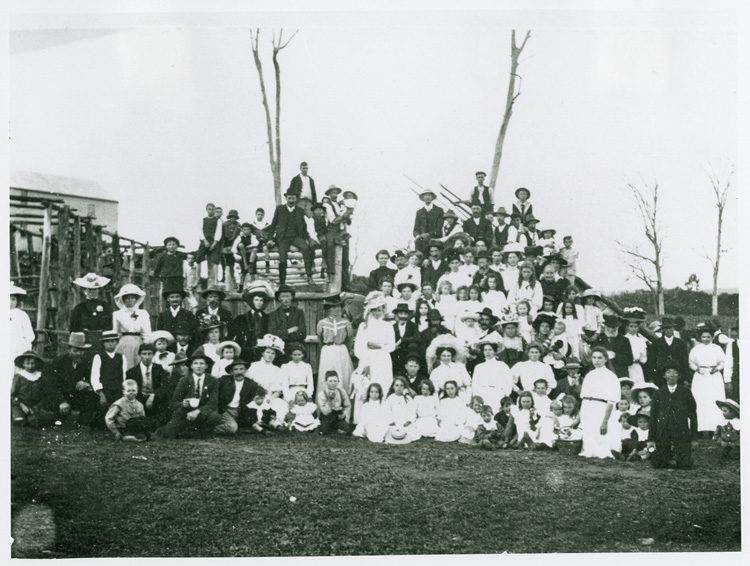
John Russell Calvert provided an end of season picnic for his hop pickers on his personal racecource at Mossiface Park C1910 - Courtesy https://researchonline.federation.edu.au/vital/access/HandleResolver/1959.17/85759
Written permission for reuse - Thanks to Federation University Centre for Gippsland Studies, Monash University Research Repository.
From reliable information recently received to hand about John Russell's father, William Calvert (Senior), he suffered from Alzheimers or Dementia in the twiglight tears of his life in the 1860s, back in Allendale in northern U.K.. It is highly likely that from John Russell's nephew's writings of 1913, stating that
"His {William Calvert Junior's} brother John {Russell Calvert} is still alive in Gippsland, and is about 88 years old. But his memory is gone; he knows nobody." it would be plausible to presume, that John Russell Calvert was probably suffering from Alzheimers or Dementia in the early 1900's. Obviously Jane was a very astute business women too, based upon her very effective purchases and marketing of top quality race horses and breeding stock, therefore it is possible that she may have arranged the property titles of Mossiface Park into her name, well prior to her death in 1909.

Census of 1909 showing grand daughter Annie is living with, and most likely looking after John Russell and Jane Calvert.
Sadly Jane Calvert nee Coulson passed away in 1909.

Details of the Headstone of John Russell Calvert and Jane nee Coulson at Bruthen - Courtesy Jeff Butler per Ancestry.com

Census of 1914 indicating grand daughter Jane had taken over the role of looking after John Russell Calvert from her sister Annie at Mossiface Park, sometime after the death of their grandmother.
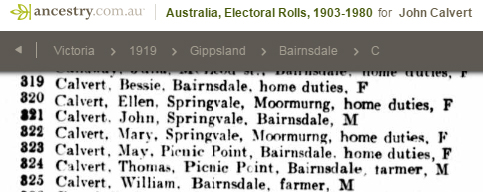
The last known official record of John Russell Calvert, Census of 1919, three years prior to his death.
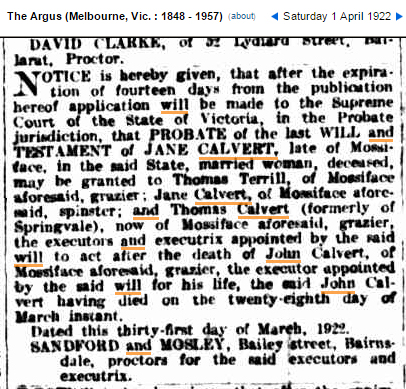
Probate notice for John Russell Calvert's estate in 1922.
In the Personal column in the Gippsland Times on the 31st March 1922, was tributed -
Old time sporting associations will be revived in the announcement of the death of Mr. John Calvert, of Mossiface, at the age of 91 years. He owned many horses, and up to a few years ago he regularly brought a small team to the Sale meetings. Amongst his latest racehorses was John Peel, whom
he trained until John Peel was as old, comparatively, as John Calvert.
He was always a straight goer, and a good sport, and his wins never failed to raise a cheer. He owned some valuable river flats near Bruthen, and was
credited with being well endowed with this world's goods. His death occurred on Tuesday, and he will be buried at Bruthen to-day.
JANE COULSON - WIFE OF JOHN RUSSELL CALVERT.
Jane Calvert nee Coulson, second daughter of Hugh Coulson and Ann Smith, born 11 Sep 1833 at Ninebanks, Allendale UK., was an exceptional and very strong woman, who obviously "stood behind" and supported her husband John Russell Calvert, a very determined, intelligent, and innovative person of the times. Jane's busy life and movements have been collated on ancestry.com.au research page, and summarized as follows :
Birth 1833 11 Sep Ninebanks Allendale, Northumberland, England.

Ancestor lines of Jane Coulson and John Russell Calvert.
Residence 1841 — Age: 8 Allendale, Northumberland, England
Residence 1851 — Age: 18 Allendale and West Allen High, Northumberland, England
Relation to Head of House: Daughter of Hugh Coulson - Lead Ore Miner
Marriage to John Russell Calvert 1853 Jan — Age: 19 Allendale Northumberland England
Residence 1853 Jan — Age: 19 Allendale, Northumberland, United Kingdom
per location at birth of son William Coulson Calvert
Departure of husband 1853 Aug — Age: 19 From Liverpool to Victoria Australia
Husband John Russell leaves Allendale with his brother William for the Victorian Goldfields near Ballarat, leaving Jane to survive and look after their only son.
Emigration to Australia - Arrival 1858 11 Mar — Age: 24 Melbourne, Australia on board the Royal Charter with husband
John Calvert and son William Coulson Calvert.
Property 1862 — Age: 29 Land selection by husband John Russell and brother-in-law William Calvert at Bairnsdale.
Residence 1864 Feb — Age: 30 Bairnsdale, Victoria. Husband John Russell bought shares in the Cleft in the Rock Gold Mining Company -
Residence noted as Bairnsdale.
Residence 1864 Sep — Age: 31 Gippsland, Victoria. Husband John Russell bought shares in the Nelson and Wellington Gold Mining Company -
Residence noted as Gippsland - probably Bairnsdale.
Residence
1868 — Age: 35 Bairnsdale Victoria. Notation from Nephew William Hewitson Calvert "Father {William Calvert Snr}, Uncle {John Russell Calvert}, Cousin {William Coulson Calvert} and I took a mob of 'fats' {cattle} to Melbourne in 1868" - From Penrith Times article 1913.
1881 — Age: 48 Mossiface Victoria. Calverts recognised as largest Hop growers in district - built 2 new hop kilns.
Departure 1903 — Age: 70 Melbourne Victoria. Jane and John Russell Calvert returned to England.
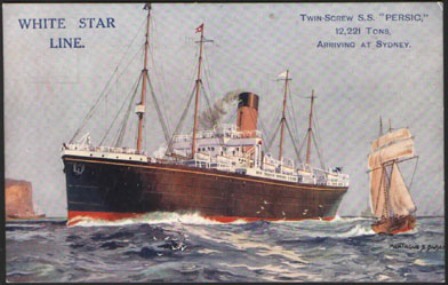
An image of the Calvert's return voyage vessel of Dec 1903, the S.S. Persic.
Departure 1903 Oct — Age: 70 Liverpool U.K. on board S.S. Persic.
Arrival 1903 23 Dec — Age: 70 Melbourne, Victoria. Age: 70 on board S.S. Persic.
Residence Census 1903 — Age: 70 Mossiface via Bruthen, Gippsland, Victoria.
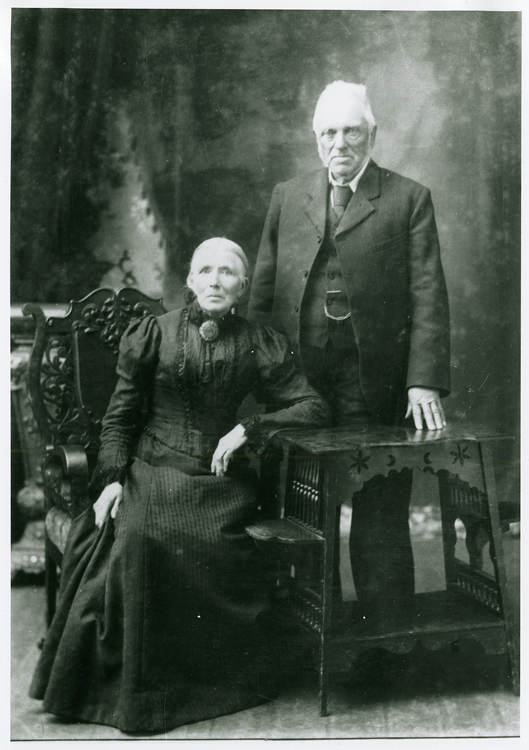
Portrait of John Russell Calvert and Jane Coulson. Courtesy http://arrow.monash.edu.au/hdl/1959.1/70376
Written permission for reuse - Federation University Centre for Gippsland Studies, Monash University Research Repository.
Residence Census 1909 Jan — Age: 75 Mossiface via Bruthen, Gippsland, Victoria.
Death 1909 14 Feb — Age: 75 Mossiface, Bruthen, Victoria, Australia.
From a family point of view, Jane had 6 brothers and 4 sisters, out of which only 2 brothers Joseph and Hugh came to the Victorian goldfields, Hugh producing 4 of Janes nephews and 5 nieces mainly in the Bairnsdale district, and eventually 16 grand nieces and grand nephews in the region. Jane's only son William Coulson Calvert, and his wife Mary White from Tasmania, who also resided locally, had 4 sons and 7 daughters, and 4 known grandchildren. Mary White's sister Fanny married Janes nephew William Hewitson Calvert, and 12 of 15 of their children survived, who lived nearby until the mid 1880s.
On top of the rather large extended family she had to cater for between Bairnsdale and Bruthen and Mossiface, there were also numerous other family business interests, breeding and racing, cattle and sheep grazing, and overseeing some of the work activities in the hops paddocks, which needed time and energy to be addressed.
Here's a little more insight as to how the Calvert family processed their Hops, according to the East Gippsland Rail Trail -
"The hops were planted (generally from rootstock cuttings) in early spring and some time later hop poles were placed on mounds and the bines (the climbing stems) of the plant trained to the pole. The poles were often cut from tea- tree and cutters would have prepared up to 300 poles each day. The hops were usually ready for picking by March.
Pickers would come from near and far to help in the fields. The local schools would close for the season and crowds of Melbourne would make a holiday of it. Pickers began working at 7am. Men took down the poles which were then laid upon the bins. Twice a day the bins containing 20 bushels (540kg) of hops were emptied into large bags and carted to the kilns for drying.
In the kilns the hops were spread on floor cloths to a depth of ten inches (25cm). The kiln was heated by burning charcoal (115-120º). The hops dried for 12 hours being turned over once about three hours before being raked on to cooling floors. After approximately 5 days they would be baled. The picking season usually ended with picnics, concerts or a ball held in either the emptied kilns or a local hall.
From the Bairnsdale Advertiser 22 March 1884
one picker ran off from Calvert's garden and was arrested with a warrant, sentenced to seven hour's imprisonment and sent back to work."
Having looked into Jane and John Russells' families back in England, there doesn't seem any special family reasons at to their return trip to the U.K. in 1903. Both their parents had passed away well before (around the mid 1800s) and it would appear only few of Jane's youngest siblings, Hannah Turner nee Coulson, and Matthew Coulson, were still alive back in Northumberland. Who knows? It may have been just a well deserved holiday trip.
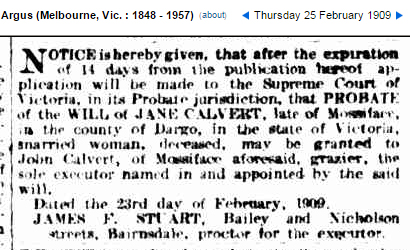
Probate notice for Jane Calvert nee Coulson's estate in 1909.
It's likely the following years after this trip, and after the above photo was taken, turned out to be quite difficult for Jane. as husband John Russell was probably going through early onset of Dementia or Alzheimers around this period. Their grand daughters Jane and Annie were recorded on the Census as being with John Russell and Jane then, obviously helping out with "home duties", however by the year of Jane's death in 1909, there was just John Russell and Jane together on the 1100 acre Mossiface Park property.

SARAH CALVERT AND HUSBAND THOMAS BROADWOOD
For information on the life of Sarah Calvert, and her husband Thomas Broadwood,

From James Broadwood born 1796 of Northumberland, U.K.

MARY CALVERT AND HUSBAND JOSEPH LIDDELL
For information on the life of Mary Calvert, and her husband Joseph Liddell,

From Joshua Liddell born 1807 at Ninebanks, U.K.


Back to Site Index.

Background into Lead Ore Mining in Northern U.K.

Background into the Gold Rush days near Ballarat Victoria.

From Joseph Richardson born 1721 at Alston, U.K.

From John Armstrong born in 1705, Haltwhistle U.K.

From Thomas Bell born 1806 of Allendale, U.K.

From James Broadwood born 1796 of Northumberland, U.K.

From William Calvert born 1791 at Kirkhaugh, U.K.

From John Clementson born 1692 in Garrigill, U.K.

From Robert Cochrane born 1778 in Eglington, U.K.

From William Coulson born 1760 in Cumberland, U.K.

From Edward Hewitson born 1794 in Kirk Linton, U.K.

From John Liddell born circa 1780 in Ninebanks, U.K.

From Joseph Parker born 1810 at Allendale, U.K.

From Nicholas Vipond born 1655 in Alston, U.K.
Email here re enquiries, corrections, or input to this site
|
|